
Water determines the Great Lakes Region’s economic future
Climate change, geopolitics and business opportunities power a blue economy
Get the inside scoop on The Narwhal’s environment and climate reporting by signing up for our free newsletter.
The boat saws left, kicking out a tail of spray that sends a flock of 70-odd geese fluttering into the northern Manitoba sky. Ryan West watches from behind the wheel as they soar over the treetops and the maze of transmission towers that stand like steel scarecrows in the boreal woods. For a few moments, the flock keeps pace with the little aluminum fishing vessel, their reflections dancing on the glassy surface of the Nelson River.
West is leading a group of visitors on a tour of the river, showing off its mesmerizing beauty and lamenting the damage it has sustained over many decades of industrial development. The Nelson is the lifeblood of this corner of the province — for generations it served as both a well-travelled highway and a key source of sustenance. Now, its slow decline has prompted members of five nearby First Nations to band together to protect what remains of the sprawling watershed.
As the geese fade into the distance, West turns and shouts over the din of the outboard motor:
“Well, I’d like to take you a lot further, but I guess we can’t — somebody’s put a big dam there.”
A little ways upstream, the path is cut off by the Long Spruce hydroelectric dam. It’s unassuming from here, dwarfed by the sheer breadth of the river. Still, West doesn’t venture much closer. It’s time to turn around. The former Manitoba Hydro millwright — who now leads land-based education programs for youth in his home community, Fox Lake Cree Nation — says the river didn’t always look this way. His grandparents would paddle its churning rapids and precarious falls all the way to the Hudson Bay coastline to hunt, fish and trap. The water was crystal clear then, and good to drink.
Nowadays the Nelson is a swollen, sluggish thing. West reckons if you could peer beneath its murky grey-green surface, you’d see the tops of trees drowned by repeated flooding from the dams. Erosion has eaten away at the banks, swallowing trees and spitting them back out as driftwood on the beaches.
“It hurts,” West says, his voice barely audible over the motor.
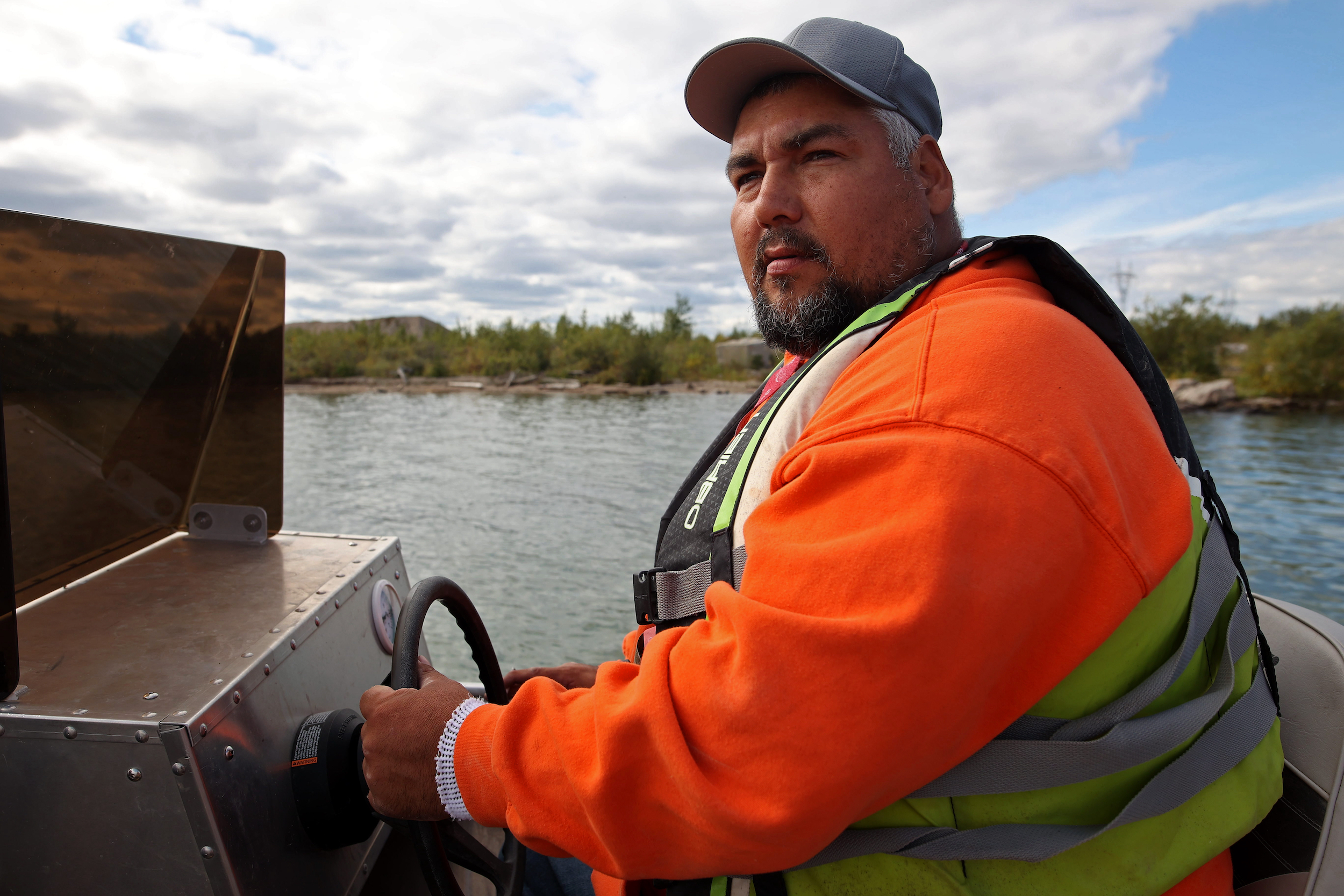
It’s not long before he steers toward shore. He couldn’t go further downstream if he wanted to. Manitoba’s largest dam — the Limestone — looms ahead, marked with “danger keep away” signs.
Past the Limestone dam, the river flows unencumbered into the Arctic Ocean. But between here and its source at Lake Winnipeg it’s been choked off at six points, its powerful flow squeezed through successive turbines to generate electricity for Manitoba Hydro and its customers in Ontario, Saskatchewan and the United States. Today, three dams here generate approximately 70 per cent of Manitoba’s electricity.
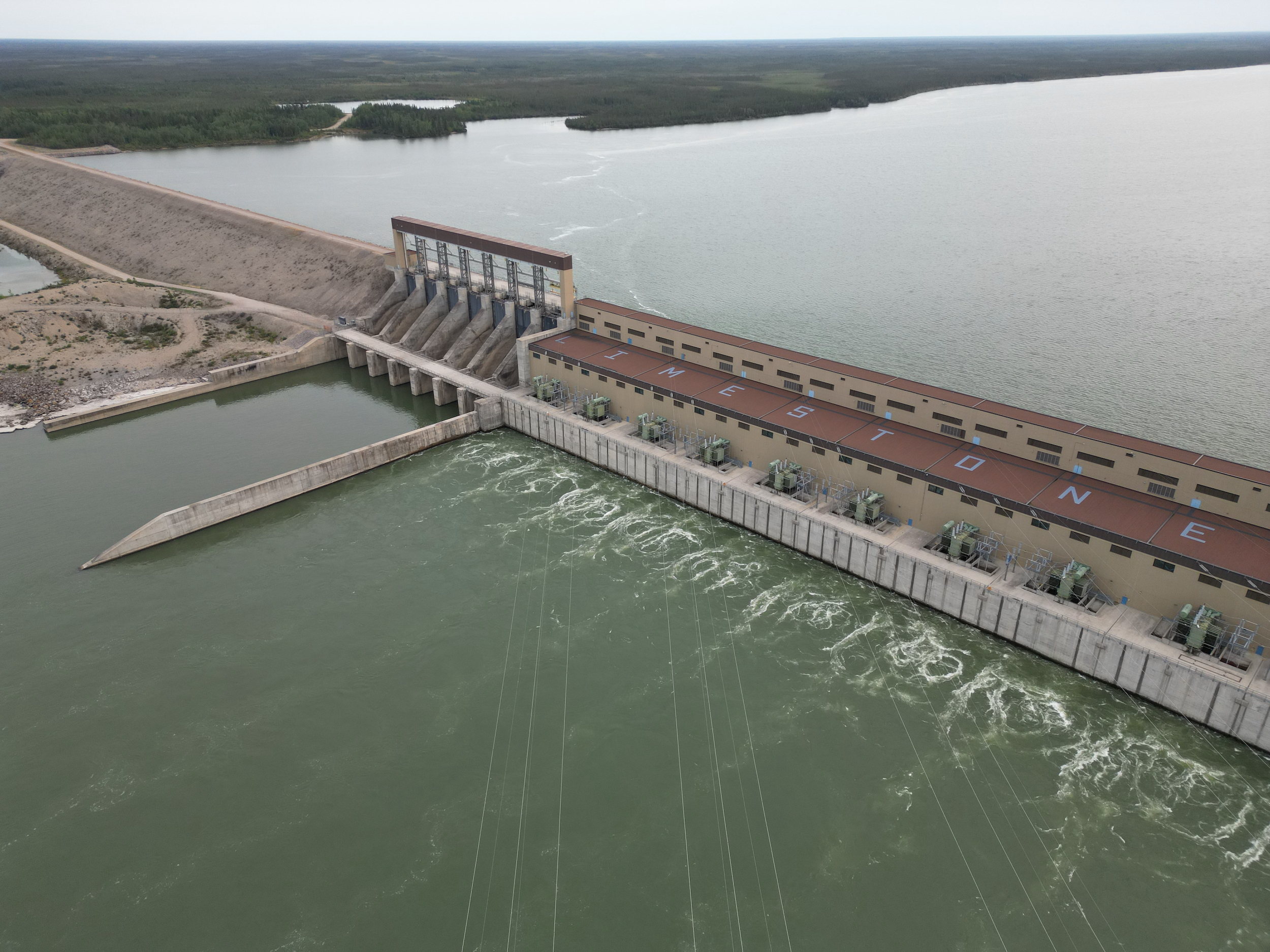
Back on the shore, Fox Lake Cree Nation’s Okimaw (leader) Morris Beardy looks toward the Limestone dam — a project he worked on as an electrician — and recounts the challenges since Manitoba Hydro began damming the Nelson in the 1950s: flooding, a loss of hunting and fishing lands, declining water quality, new animal migration patterns, new bugs and pests.
“We’re a resilient people. We’ve been through much,” he says.
Beardy knows there’s no going back; climate change is only bringing new challenges.
“We just have to adapt.”
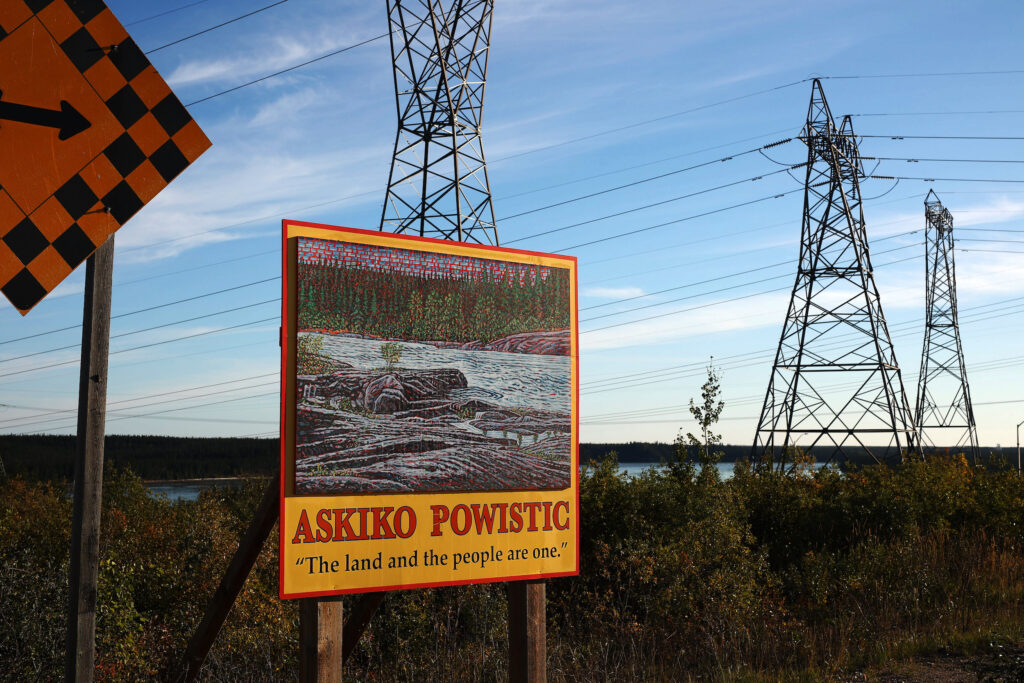
Since 2020, Fox Lake and four neighbouring Cree nations — York Factory, Shamattawa, Tataskweyak and War Lake First Nations — have been working toward just that. Burgeoning funding and public support for Indigenous-led conservation has offered the nations an opportunity for recognition of sovereignty over their traditional lands and the chance to safeguard them for generations to come. Spearheaded by York Factory, the five nations are working on a proposal for an Indigenous Protected and Conserved Area (IPCA) called Kitaskeenan Kaweekanawaynichikatek, which would recognize the nations’ longtime stewardship of the region and leverage federal funds to formally manage and protect their shared homelands under Indigenous laws and governance.
Kitaskeenan Kaweekanawaynichikatek, which translates as “the land we want to protect,” is one of more than 50 IPCA proposals that have sprung up across Canada since the federal government began funding these critical conservation efforts in 2018. Indigenous-led conservation has, in recent years, been recognized as key to preserving biodiversity and meeting international goals to protect 30 per cent of lands and waters by 2030.
Like other proposals, Kitaskeenan isn’t without its challenges: the waterways have been flooded, re-routed and polluted in the name of hydroelectric development, prospectors have surveyed for underground minerals and politicians have floated plans to use the northern lands to pipe crude oil, lay fibre internet cables or build new ports. All the while, the nations have been divided by displacement, flood settlements and the erosion of their rights to hunt, fish and trap on their own lands.
But the five Cree — or Inninew — nations are hoping Kitaskeenan will help to mend the divisions of the past and redefine the future prosperity of the northeast coast by preserving the land, water, language and culture for generations to come. The proposal, they say, is a chance to come together with one voice to decide what comes next for their traditional lands.
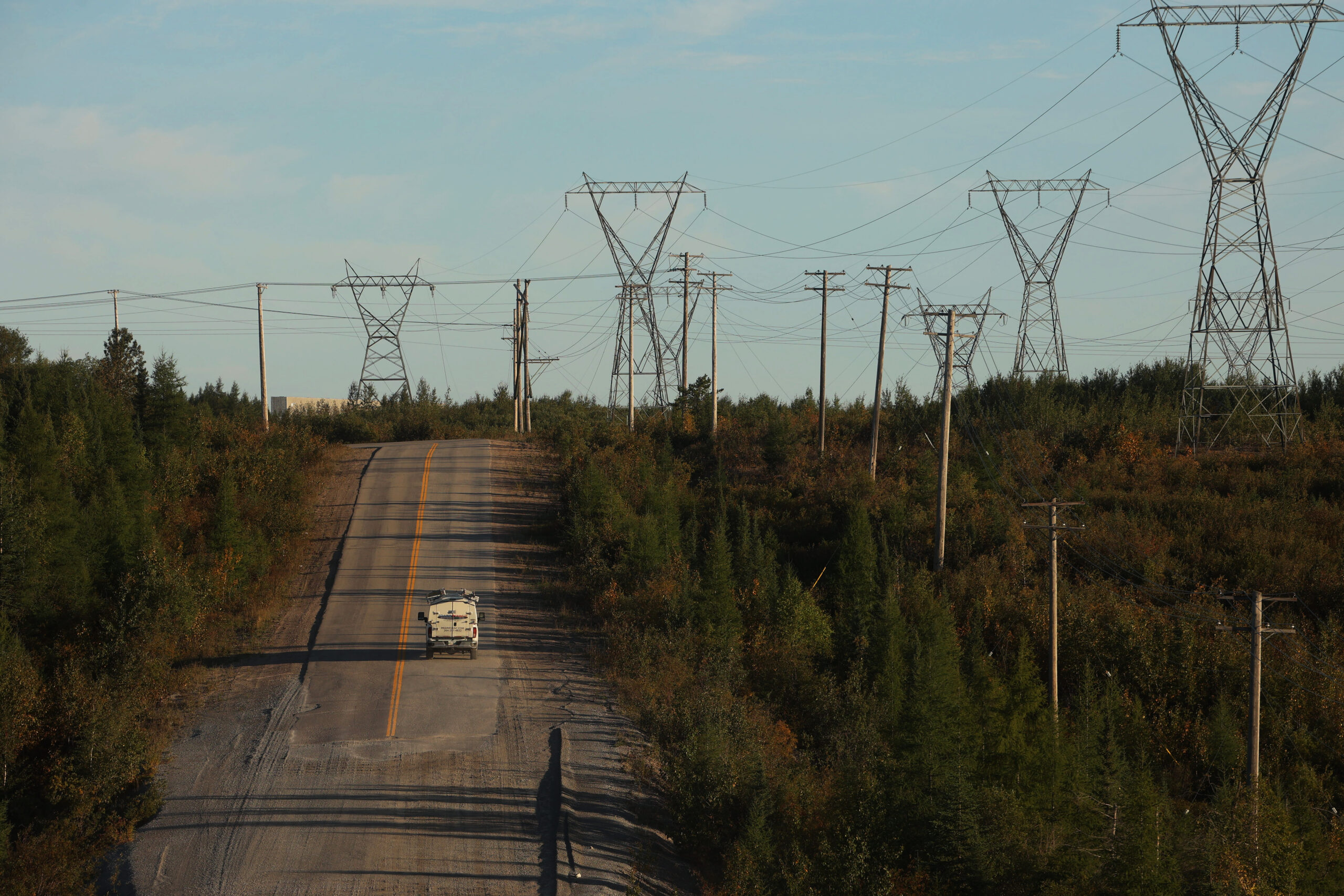
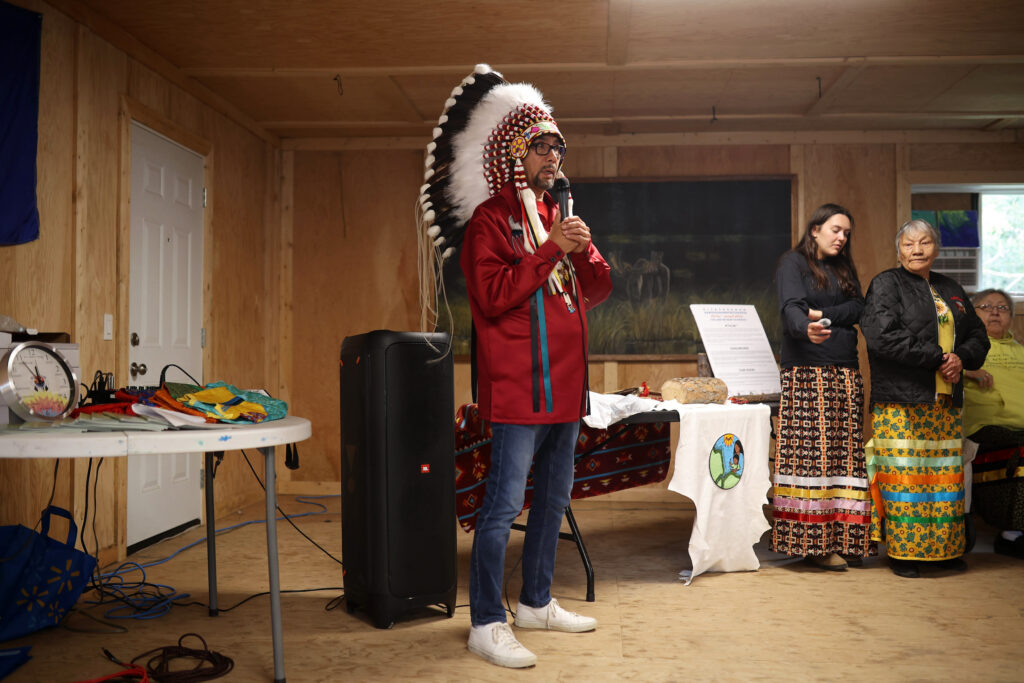
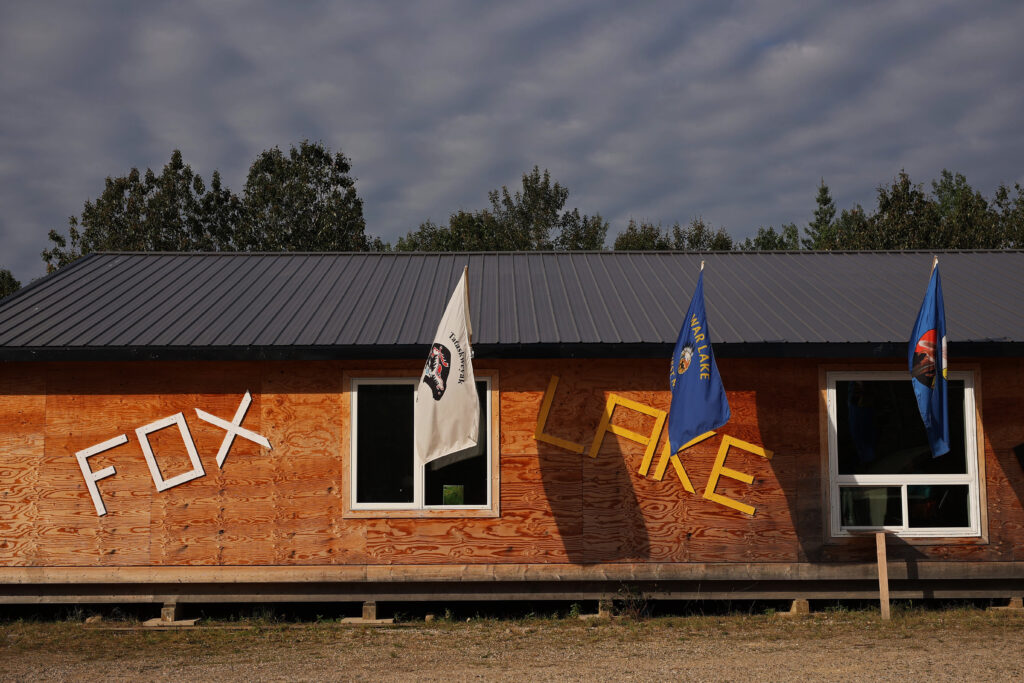
In early September, the five communities have gathered northeast of Gillam to officially launch the proposal, joined by political representatives, Manitoba Hydro staff and First Nations leaders. On the first morning, the crowd settles around folding tables to listen to stories from elders and speeches from leaders.
“It fills my heart with pride and joy that we are coming together as five nations,” Beardy says to the 100 or so people gathered more than 750 kilometres northeast of Winnipeg.
“If you look around Fox Lake, we’re no stranger to development,” he continues.
The road here crosses the river on the Long Spruce dam and winds through the seemingly endless sea of trees that is the northern boreal forest, broken only by rows of transmission towers. Manitoba Hydro, Beardy says, “is all around us.”
He points to his two granddaughters and acknowledges the many children packed into the hall.
“This is what we’re trying to do: protect the area for them, so they can enjoy the land, the waters and everything that we offer.”
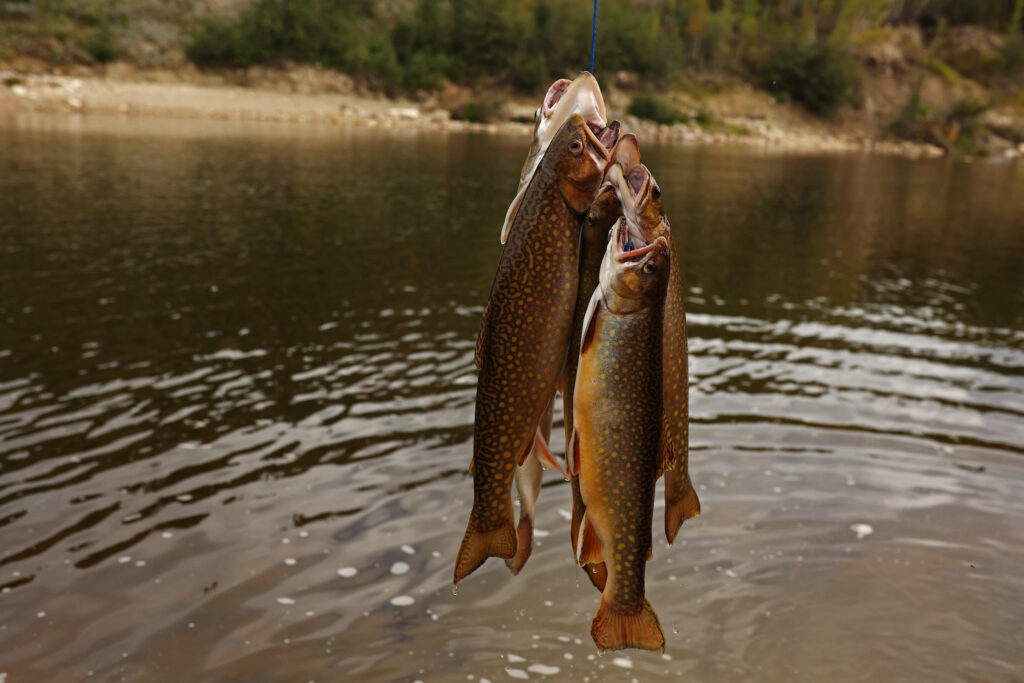
As evening light starts to fade, Jimmy Lockhart sits at a picnic table, flipping through a vision book outlining the five nations’ hopes for Kitaskeenan. The book compiles learnings from the last four years of discussion among the nations about what their protected area might look like. It will take many more years to define the boundaries and decide on tourism opportunities, educational programs and the fate of industrial developments.
Lockhart traces a finger over aerial photos of the region, pointing out lakes and river bends he’s visited to hunt and fish.
He’s here as part of the gathering at Fox Lake’s culture camp, originally built as the community’s goose hunting and spring gathering camp. It’s nestled in the crook of the Nelson and Limestone rivers, less than two kilometres from the massive Limestone dam. A handful of buildings, a row of platform tents and a communal fire pit are shrouded on three sides by lush woods. Snarls of pine, spruce, alder and birch reach skyward; wild roses, low-bush blueberries, willows and fireweed blanket the terrain below.
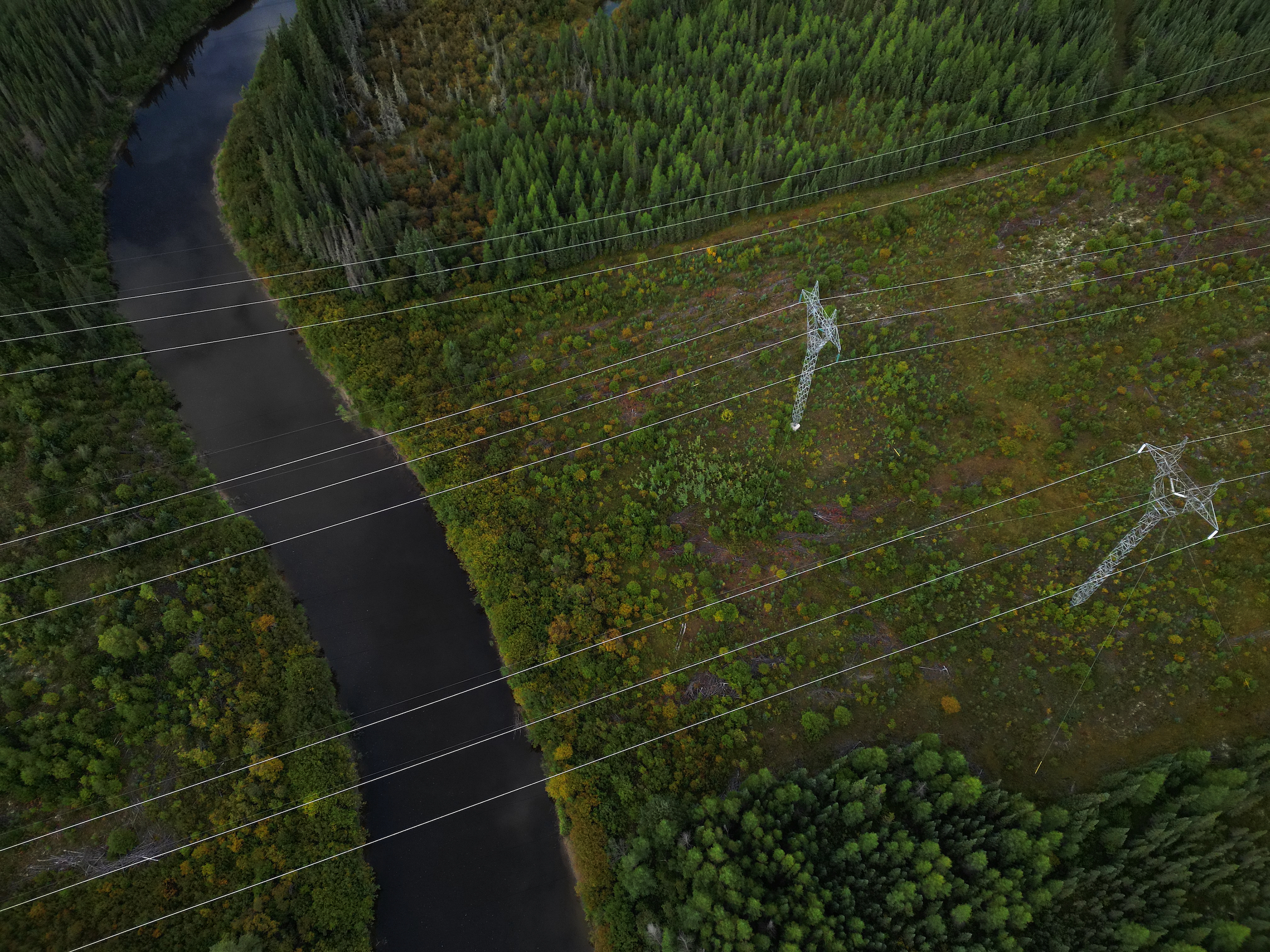
These woods form the southern edge of the Hudson Bay lowlands, a unique ecological region that extends along the northern shores from Churchill, Man., through Ontario, to the edge of James Bay in Quebec. The low-lying silt is pockmarked by lakes, bogs and creeks, fed by major rivers like the Churchill, Hayes and Nelson. It’s the third largest wetland — and second largest peatland — in the world.
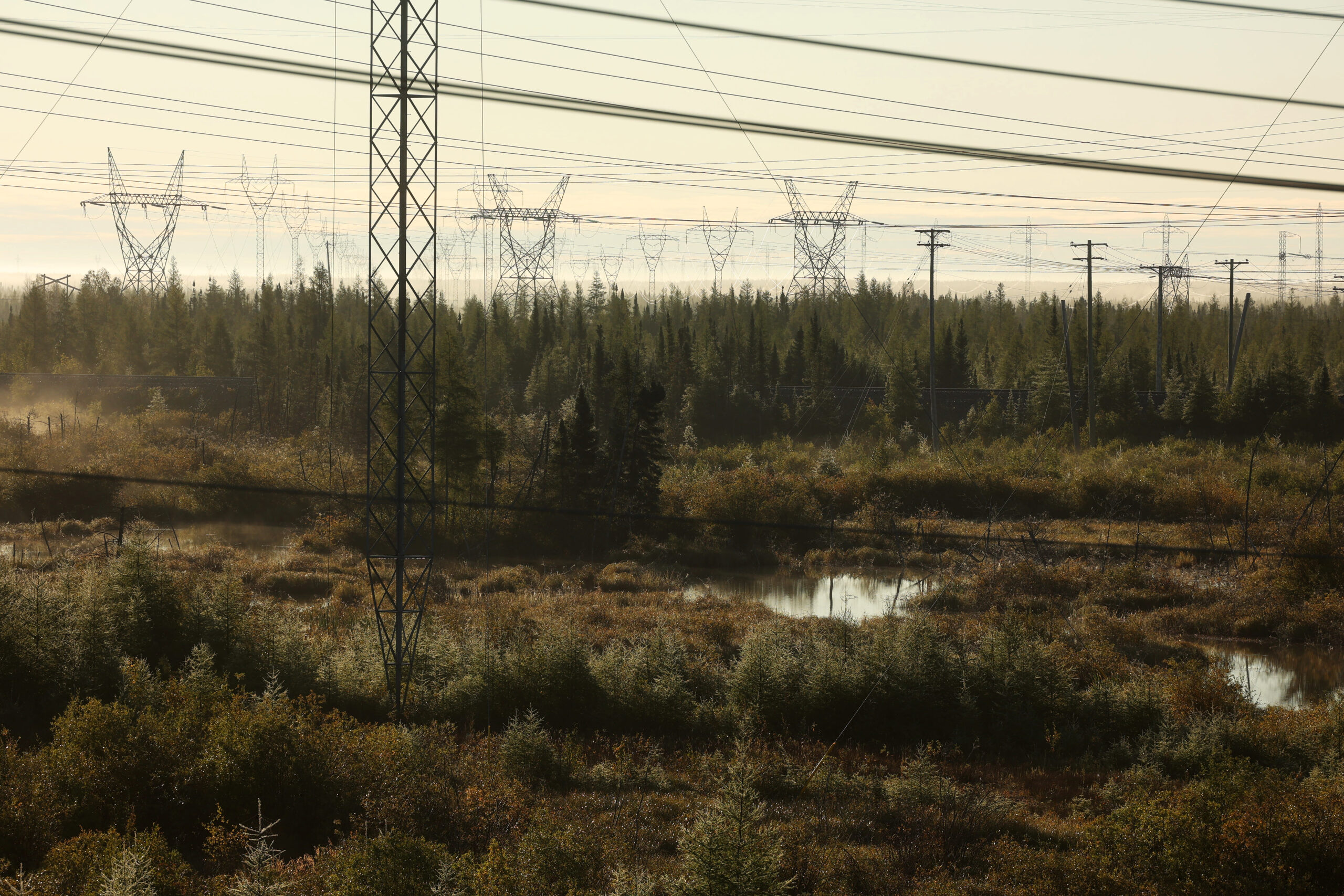
Lockhart has lived here all his life; he knows its waters like the back of his hand. His first job was with a commercial fishery at Kettle Rapids, near Gillam, hauling walleye, pickerel and trout.
“It was beautiful, the rapids, we’d fall asleep listening to them all night,” Lockhart recalls.
In time, the rapids would disappear, swallowed by the Kettle dam and repeated flooding. The fishery closed. Lockhart had planned to pass a licence on to one of his three children someday, but “there’s no commercial fishing out here now,” he says.
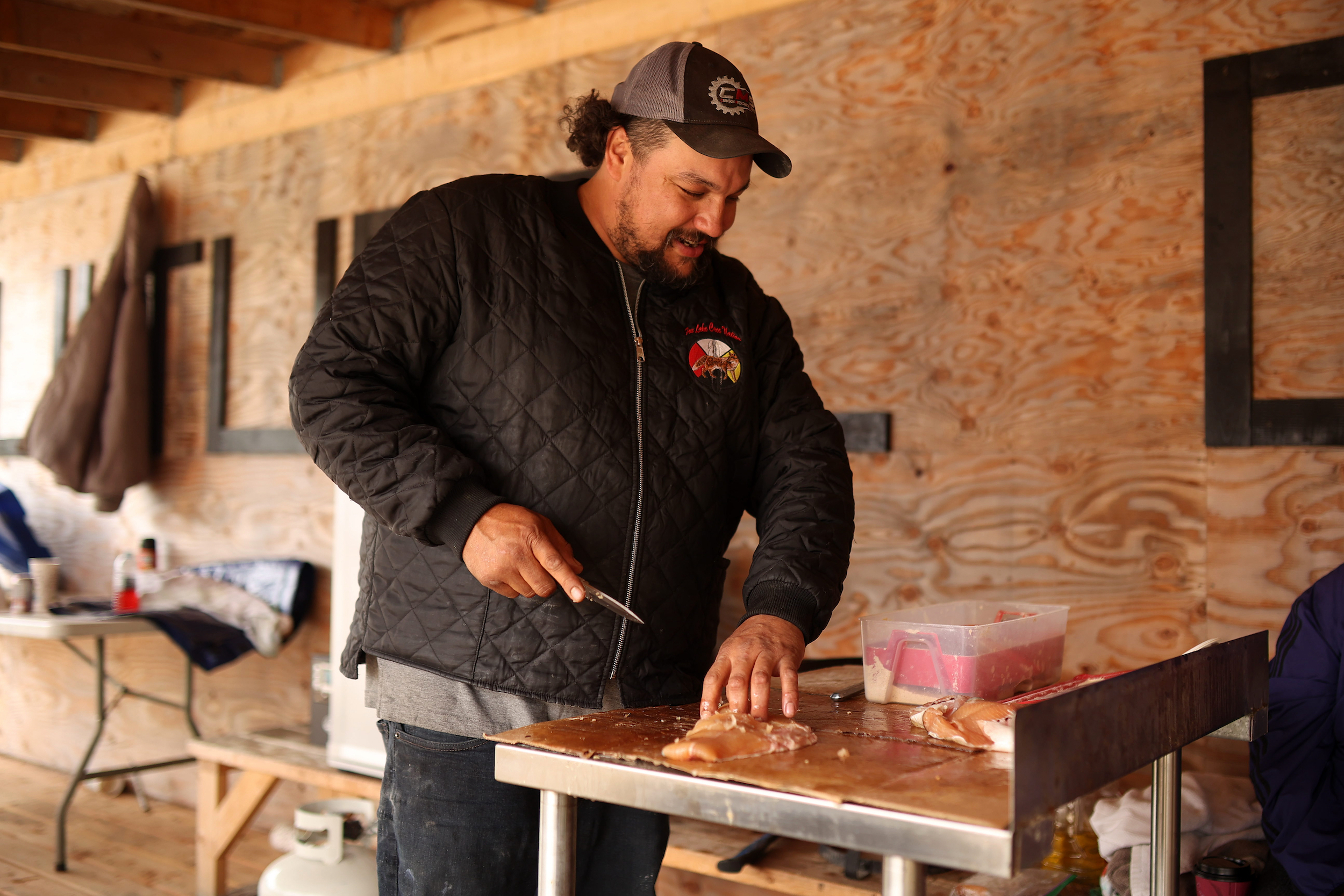
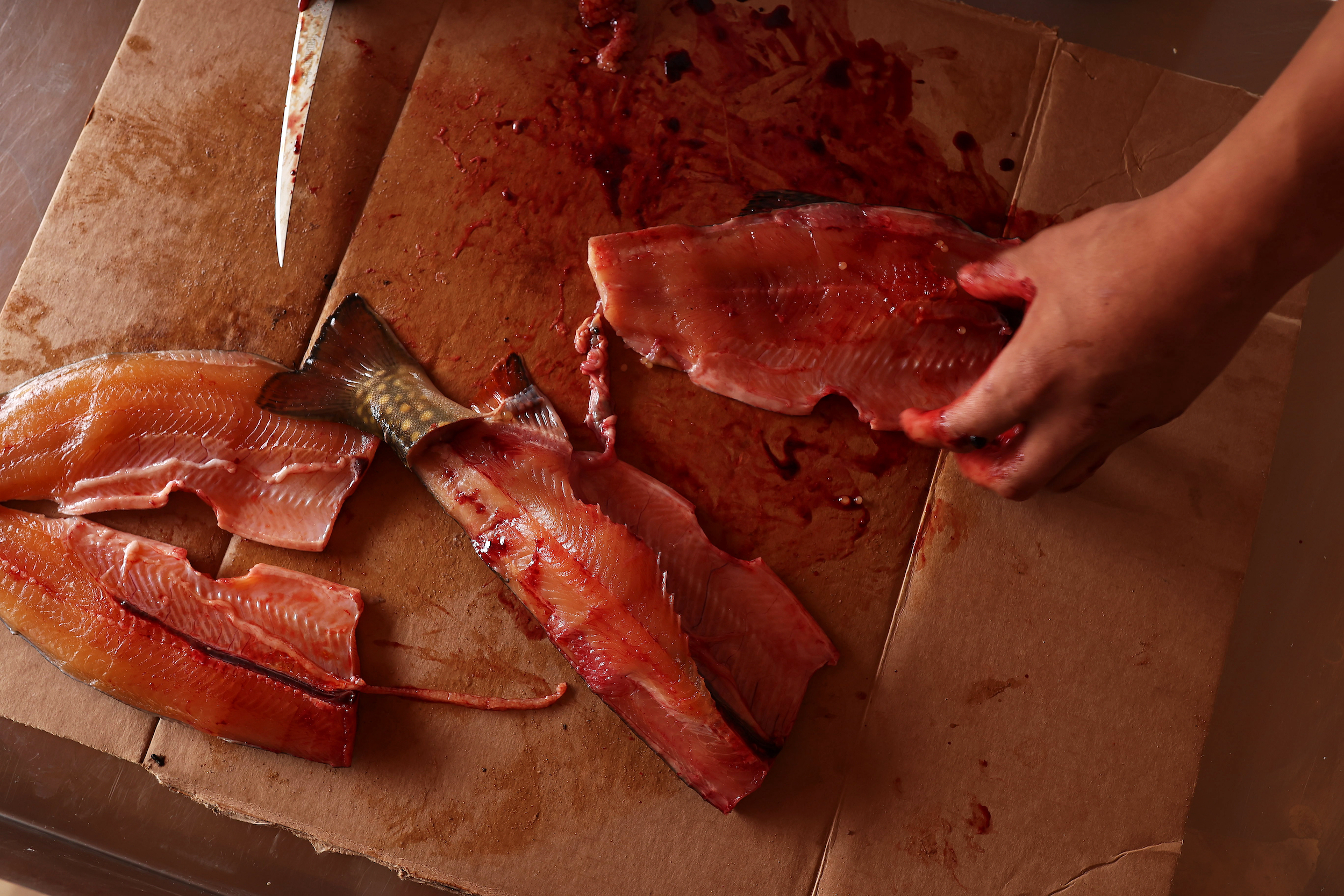
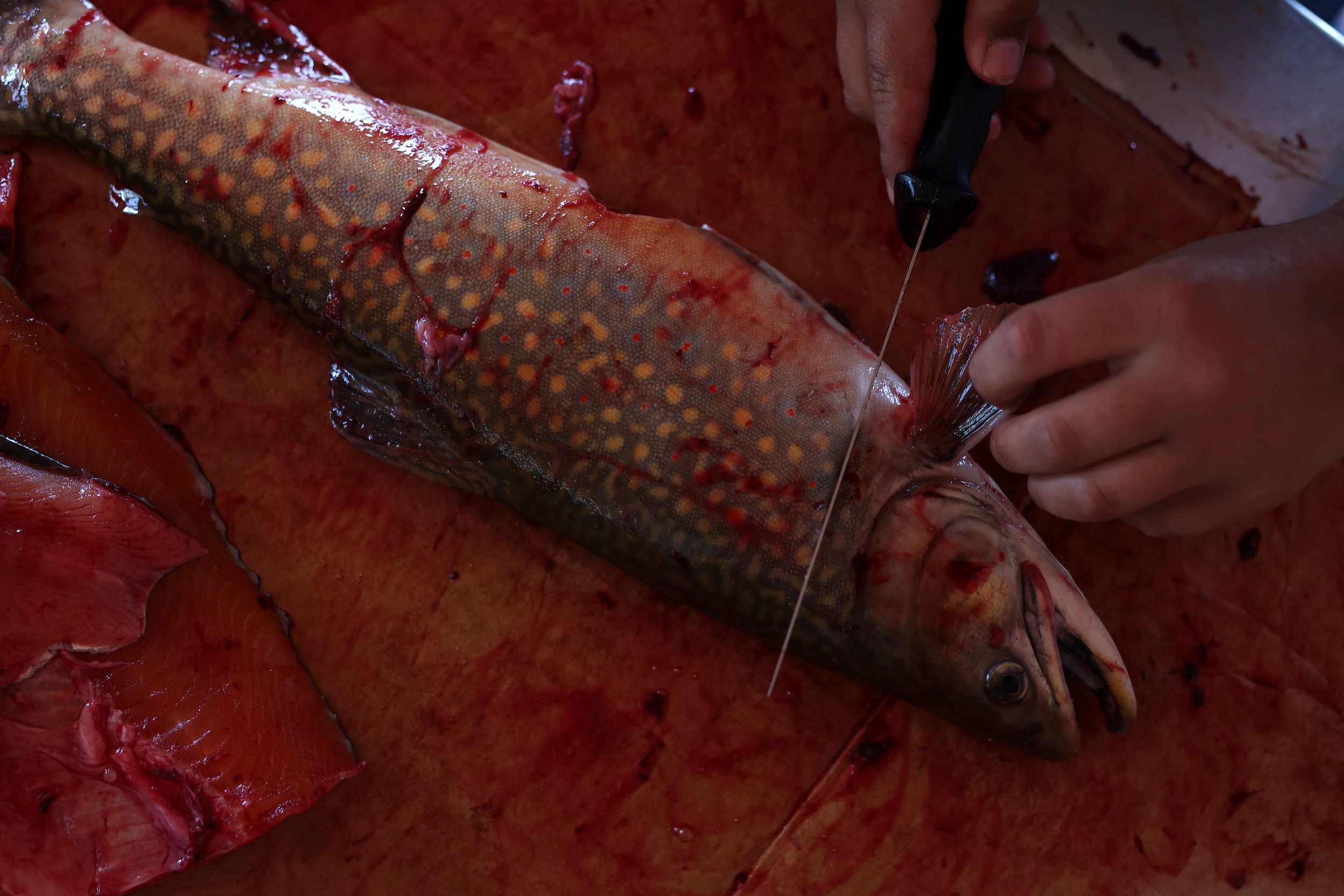
Lockhart’s story is one echoed by elders, leaders and community members throughout the week in Fox Lake: Manitoba Hydro’s arrival on the Nelson River in the 1950s marked the beginning of many decades of devastation. As the waters changed, so too did each community’s economy and way of life.
“When I was a little girl … it was very clear water. You could take your pail there and get water from the lake. You could go fishing there down the lake and it was good,” Martha Spence, an elder and Anglican priest from Tataskweyak, shares on the first morning of the gathering.
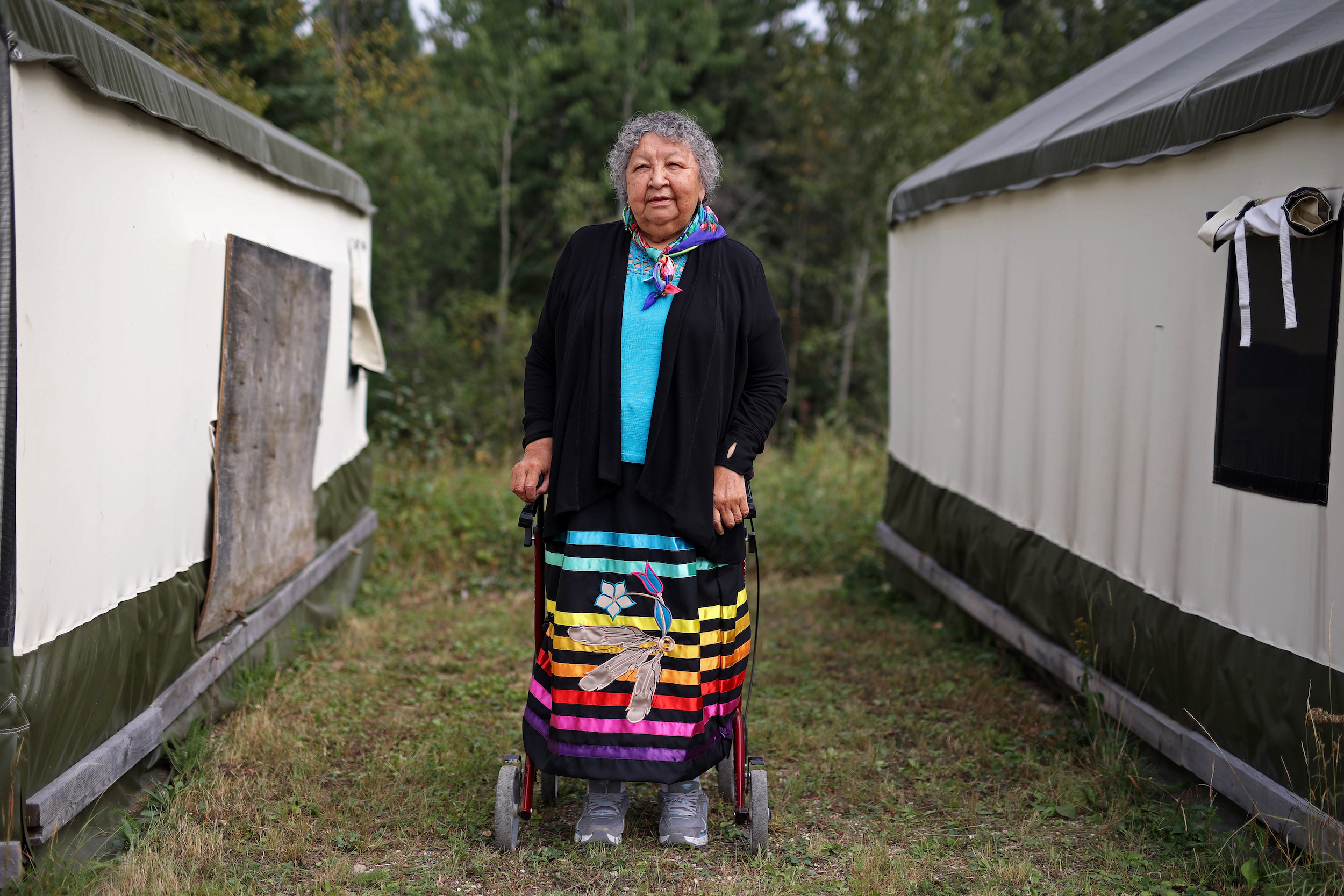
Spence was a child when work started on the Kelsey dam — the first hydroelectric development on the Nelson, about 40 kilometres upstream of Tataskweyak — in the late 1950s.
“In the 1950s, the mentality of our country was so different — we didn’t matter,” Phyllis Sinclair, whose ancestors are from Kettle Rapids, chimes in.
“There was no consultation. All of the sudden you’re living in your community and you start seeing all these things happening and you really don’t have much of a voice because nobody’s listening to you.”
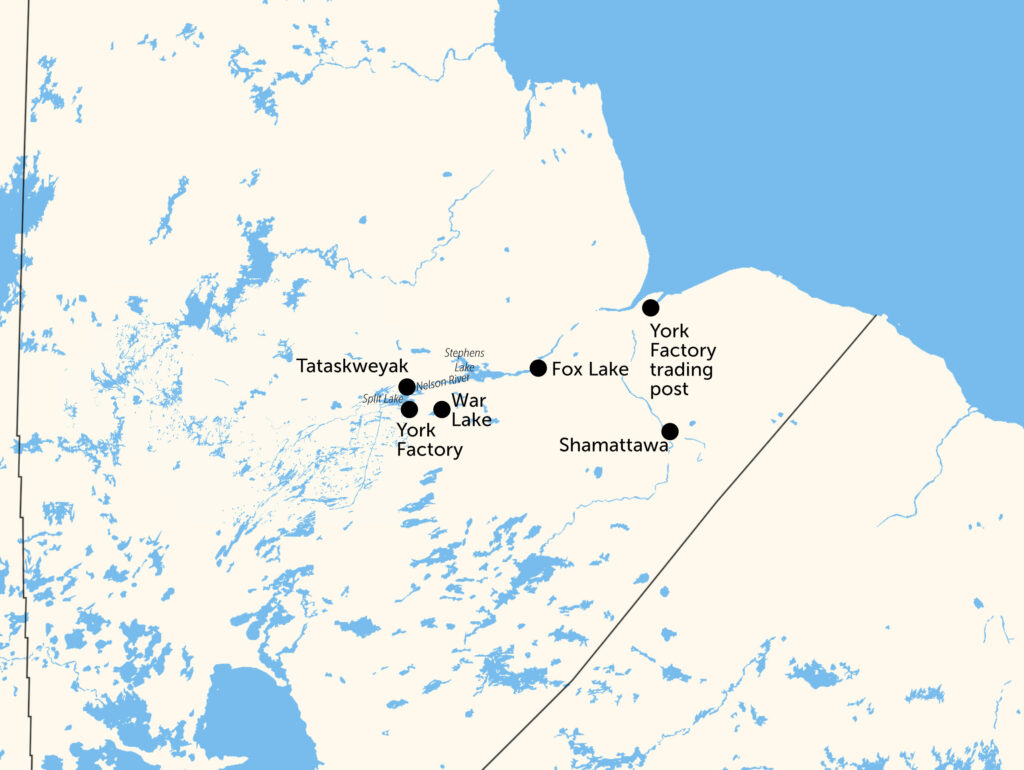
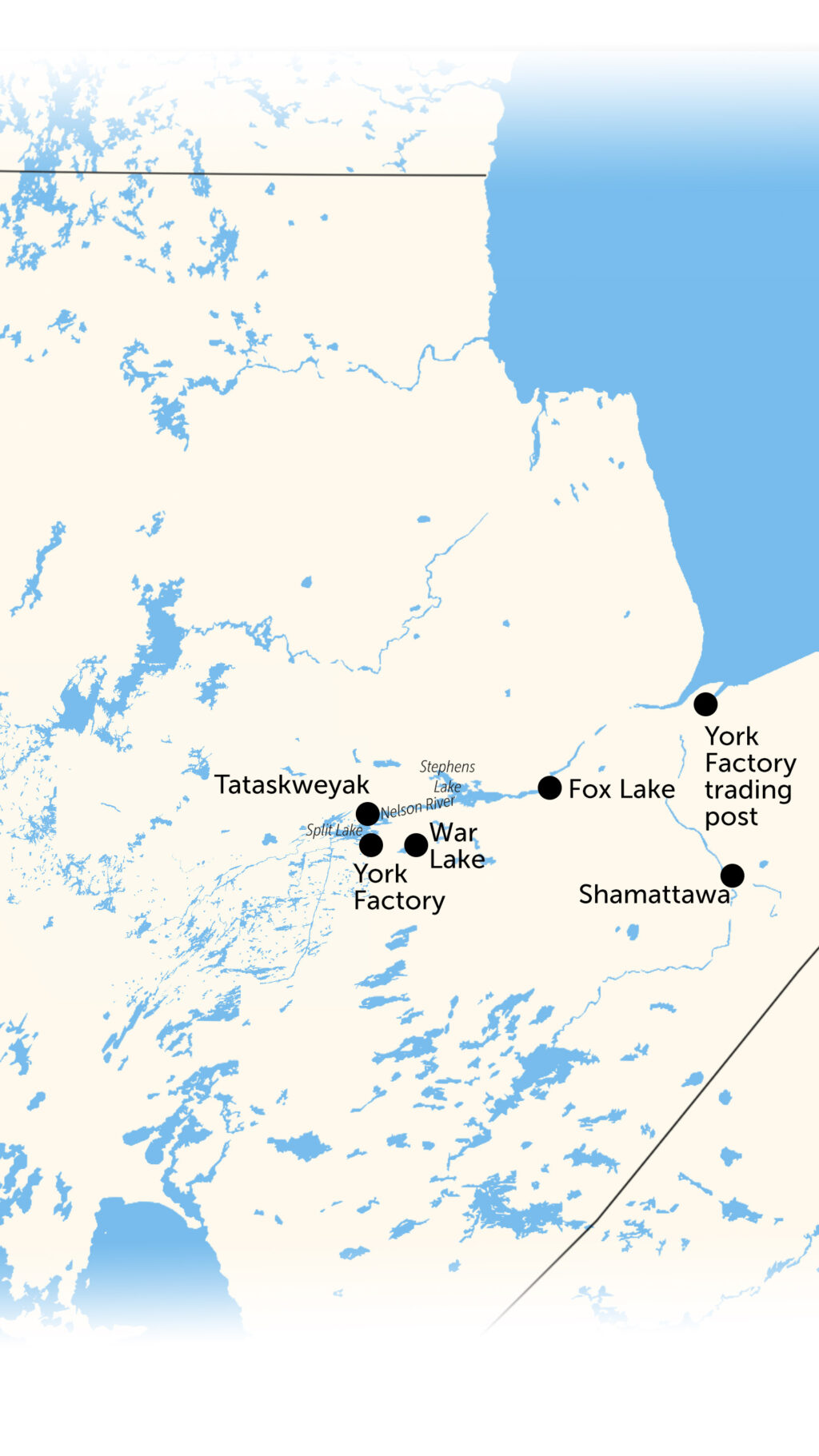
The Kelsey dam flooded more than 56 square kilometres of boreal forest, destroying hunting grounds. Hydroelectric development on the river only accelerated.
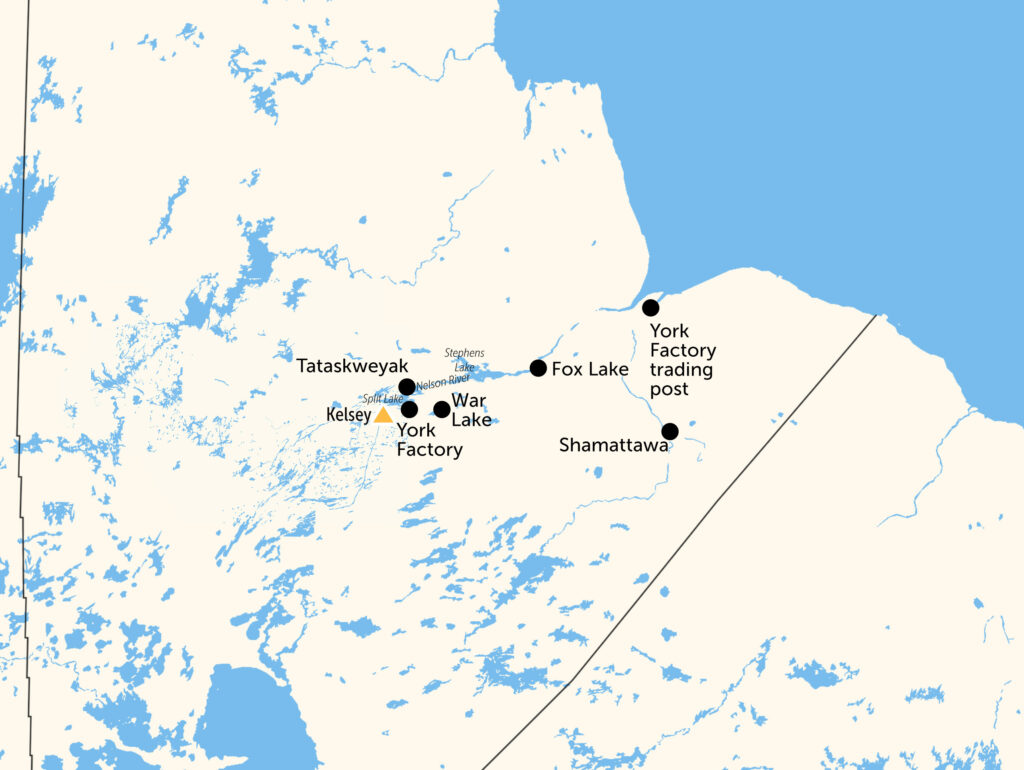
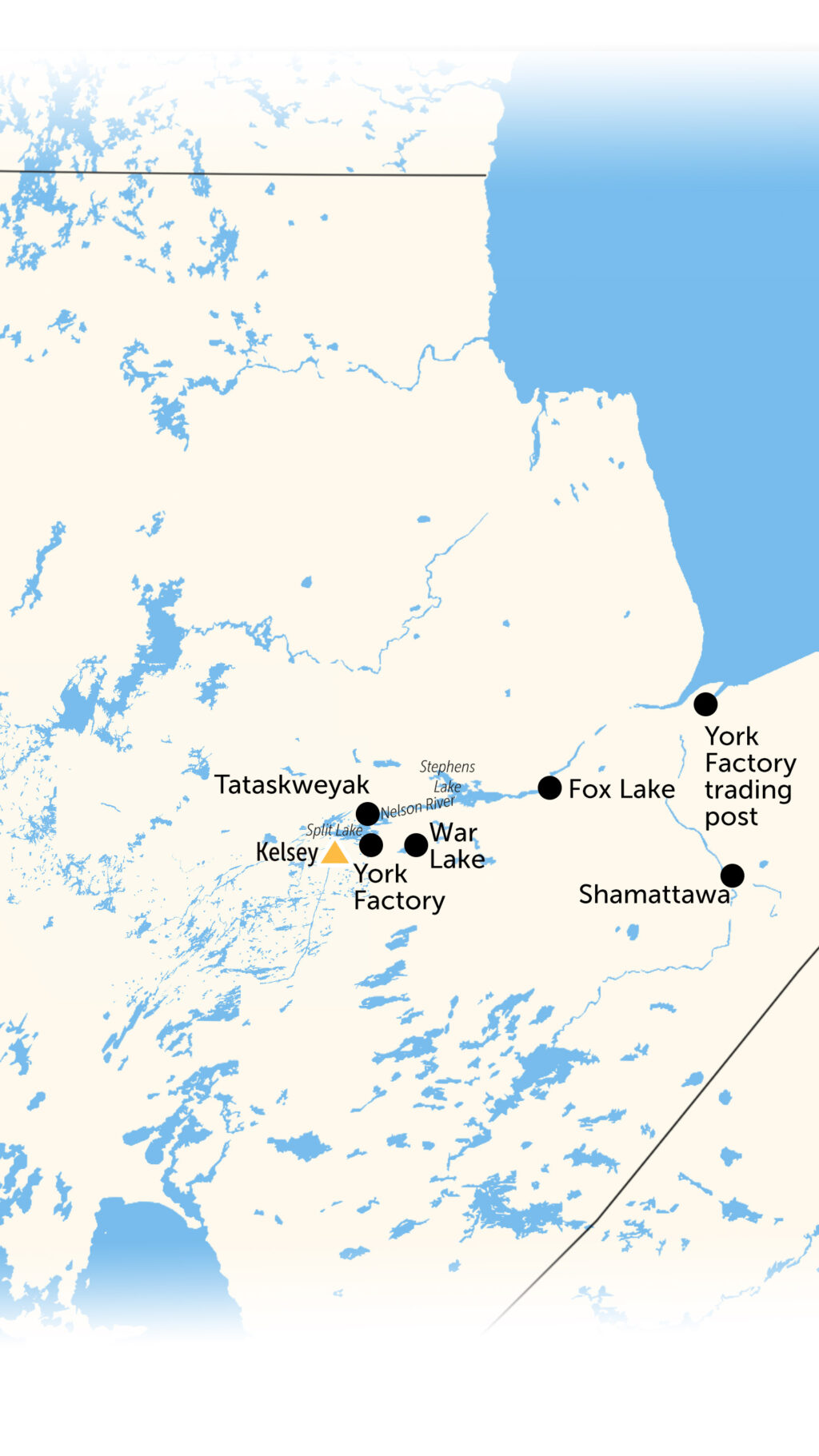
The Kettle dam came online in 1970, tripling the size of what is now called Stephens Lake (named after a Manitoba Hydro chairman) and flooding more than 200 square kilometres of land — including Cree harvesting and cultural sites. Construction quickly began on the next dam, Long Spruce, 16 kilometres downstream. Long Spruce flooded a further 13 square kilometers of Nelson River shoreline. The Limestone dam would soon follow.

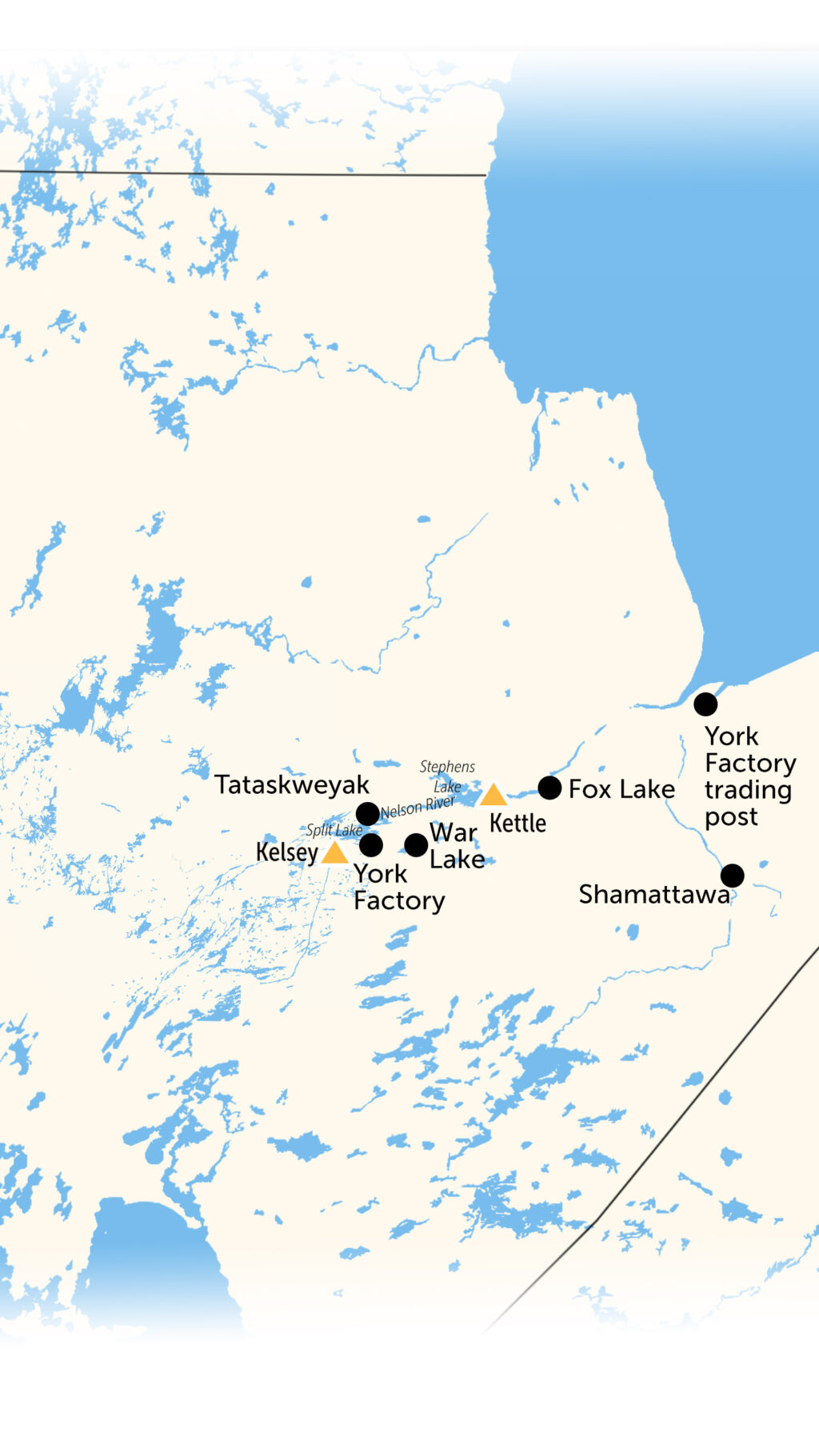
At the time, Manitoba Hydro was looking to generate more electricity, both to meet growing demands and to sell power to other jurisdictions. According to a company document, it received permission from the provincial government to re-route “most of the flow” of the Churchill River, which carries five times more water than the Red River, into the Nelson via South Indian and Split Lakes.
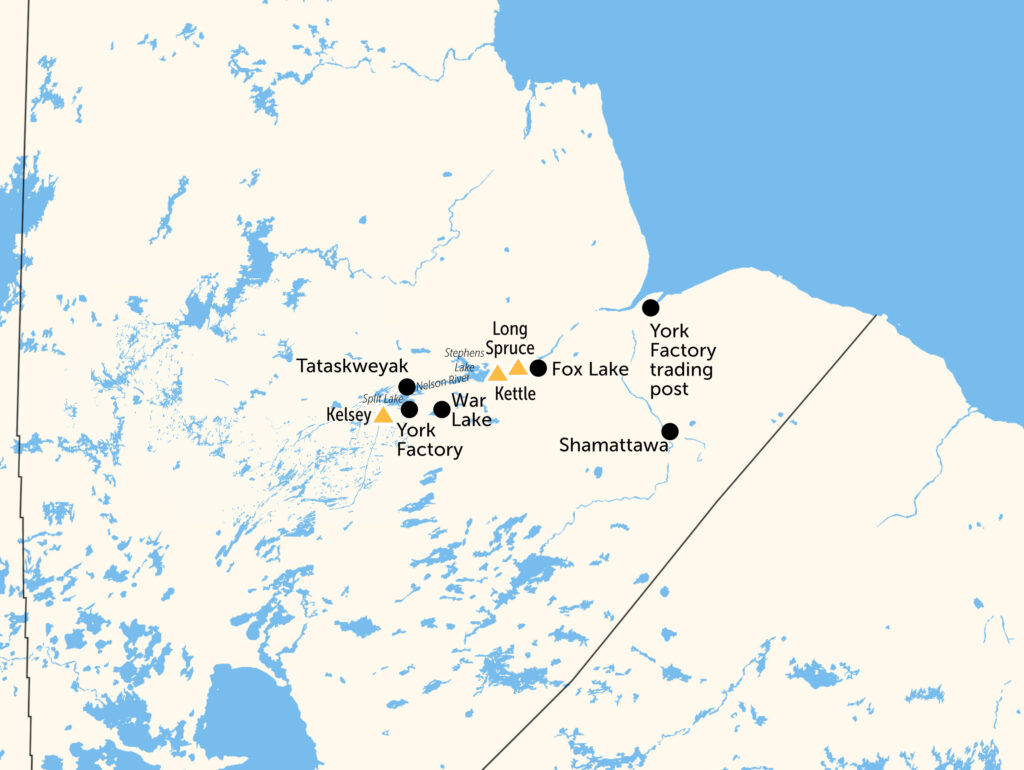
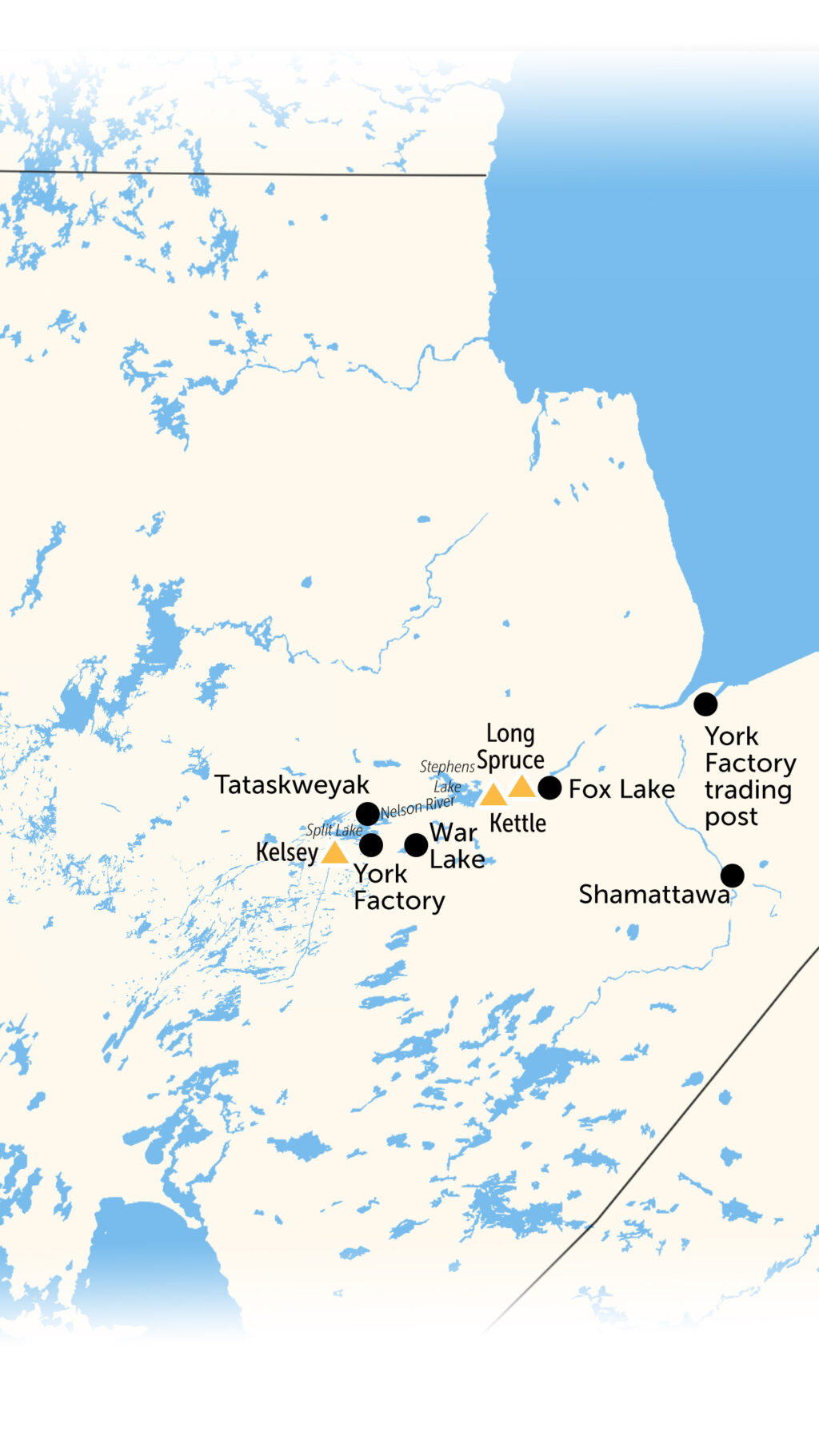
The impacts on northern First Nations were, as Beardy says, “devastating.” Water levels at South Indian Lake, almost 200 kilometres northwest of Tatskweyak, rose an average of three metres. The members of O-Pipon-Na-Piwin Cree Nation, who lived on its shores, were forcibly relocated. The commercial fishery that once thrived on the lake — in its time the third-largest in North America — was destroyed.
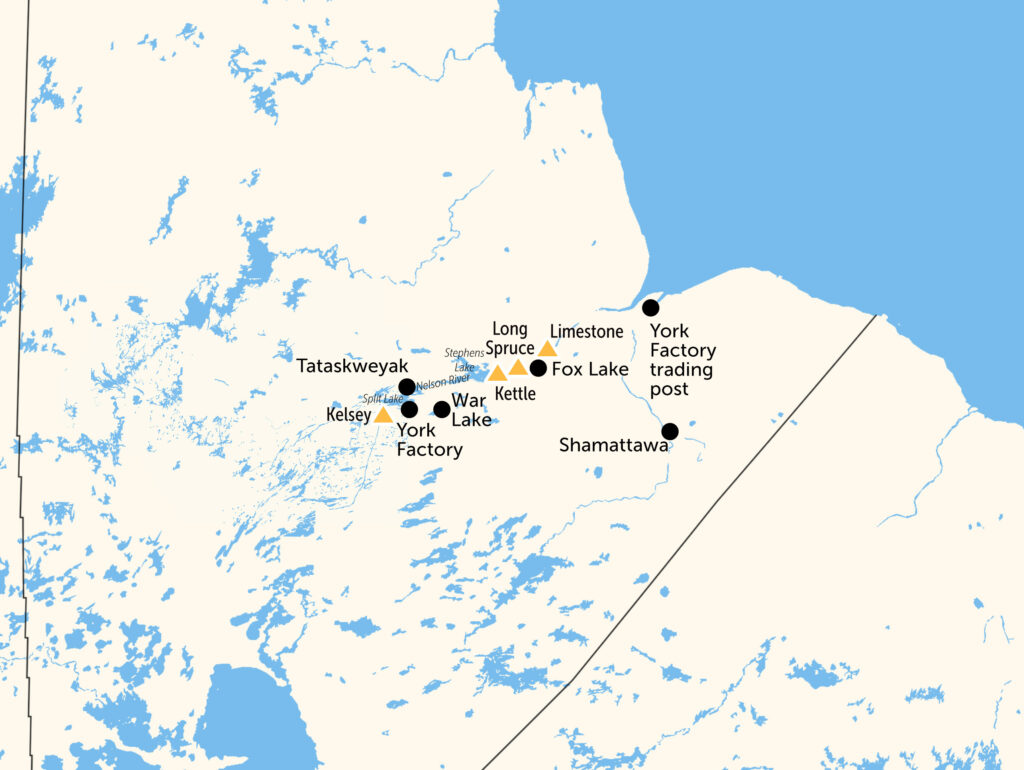
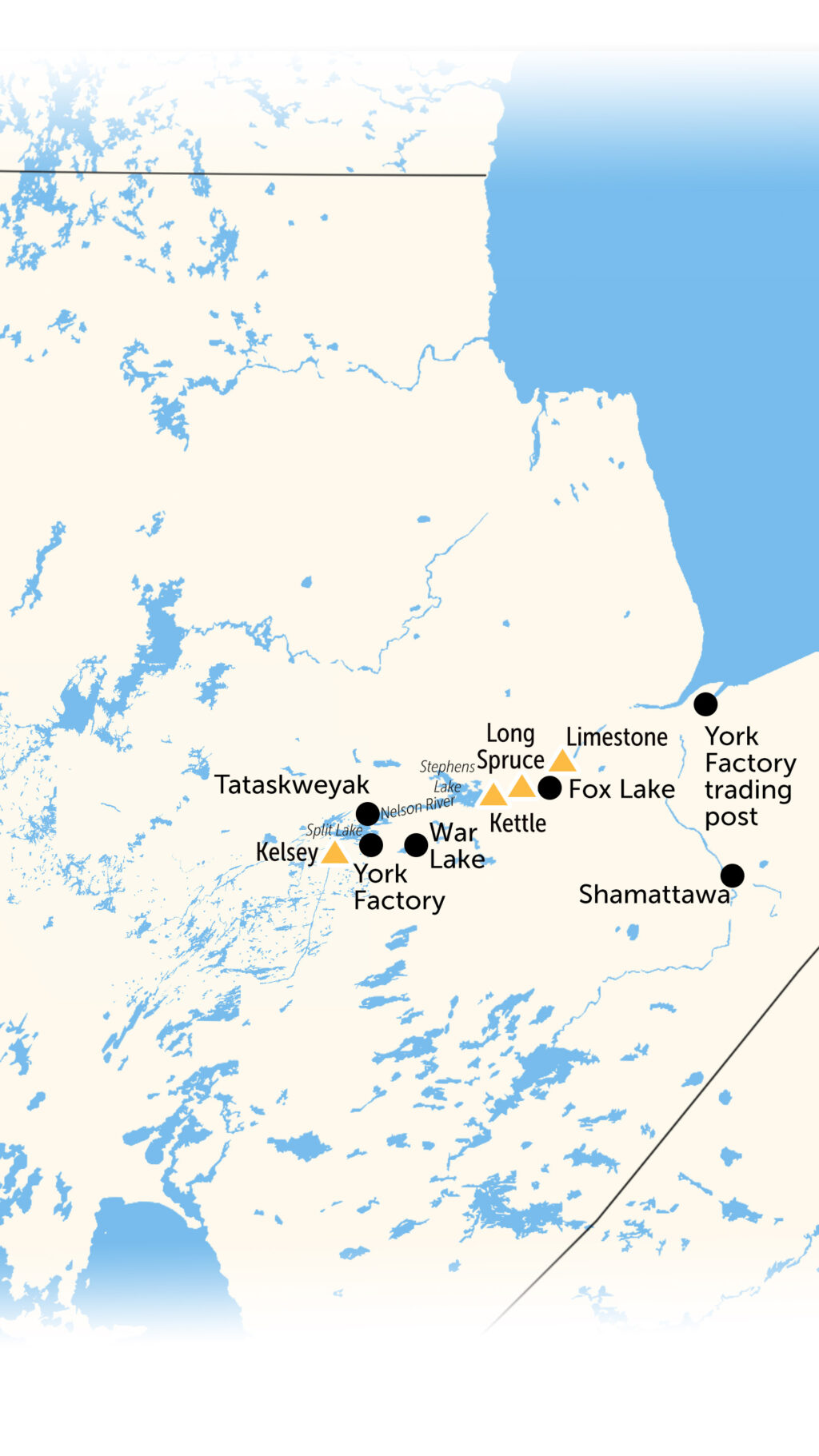
Hydro appropriated more than six square kilometres of Tataskweyak’s reserve land for water storage, and drained more than 415 kilometres of the Churchill river shoreline. The diversion dumped new silt and sediment into Split Lake, muddying the waters, altering fish habitat and increasing the mercury content.
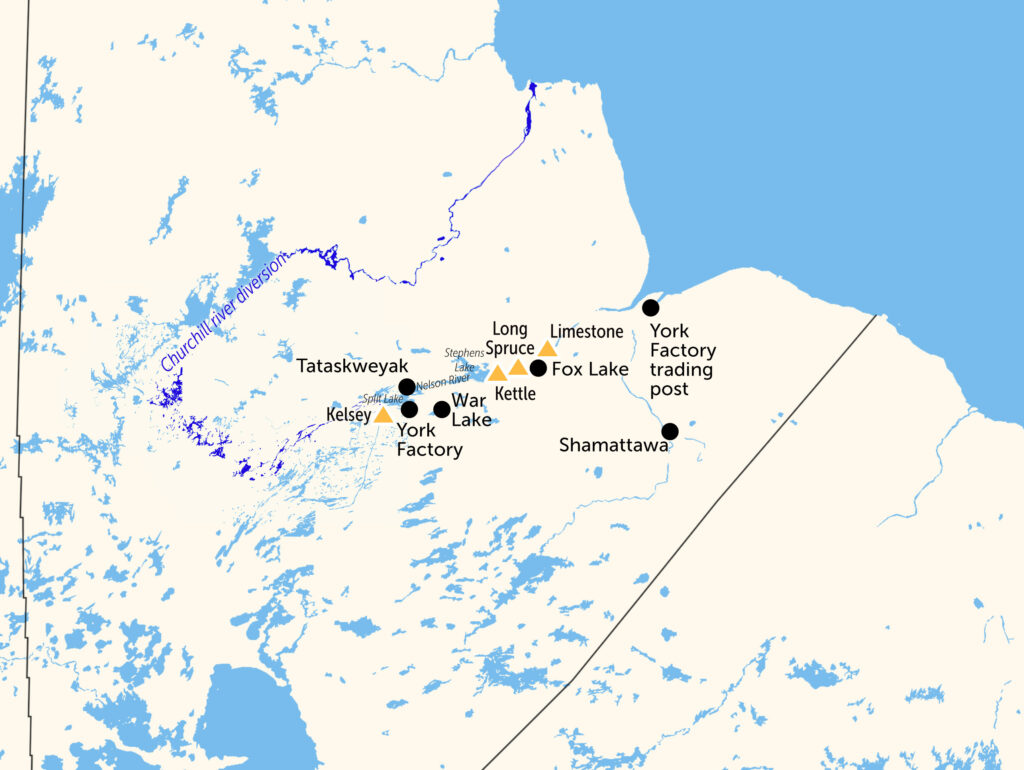
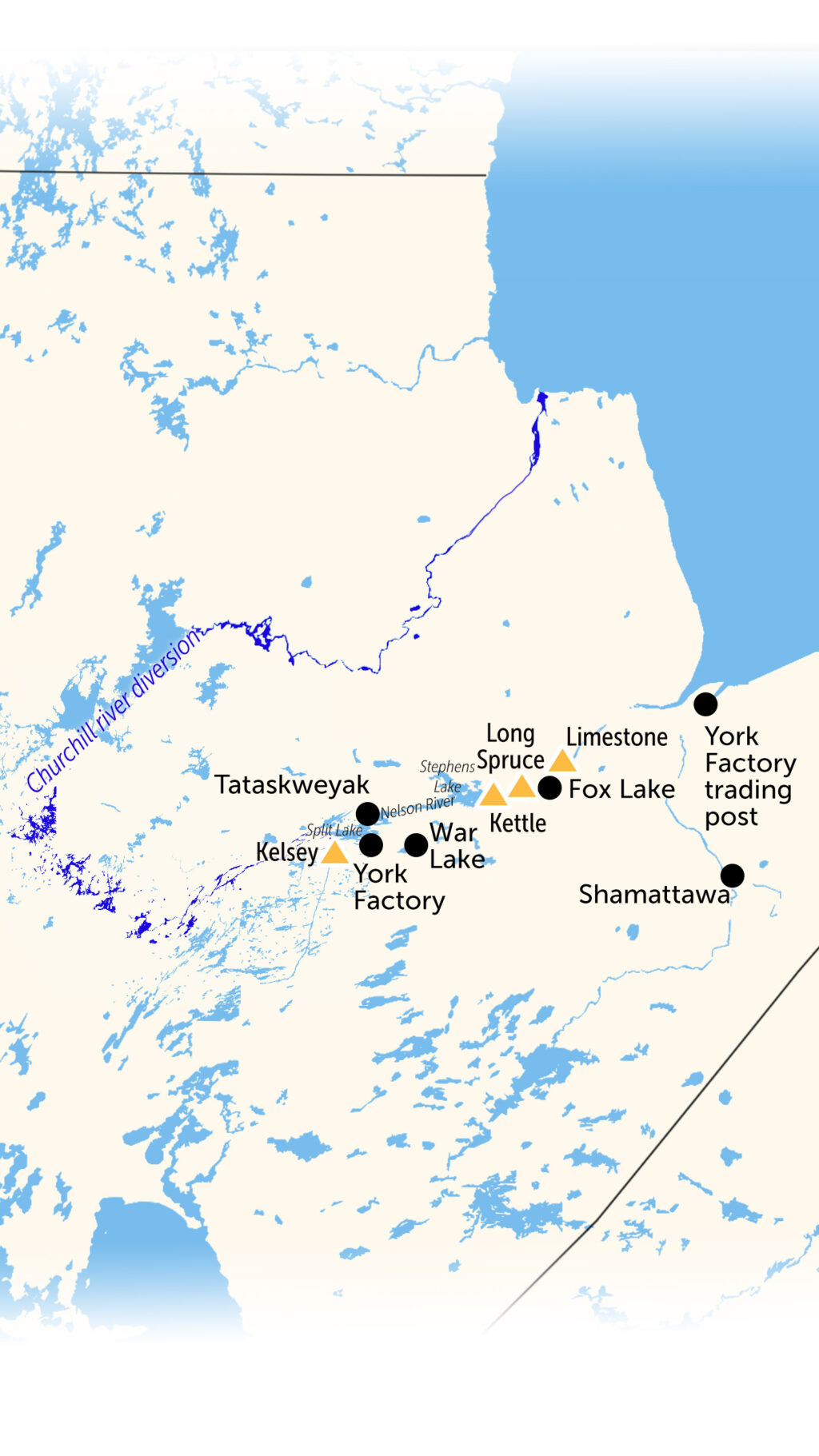
The Kelsey dam flooded more than 56 square kilometres of boreal forest, destroying hunting grounds.
Hydroelectric development on the river only accelerated.
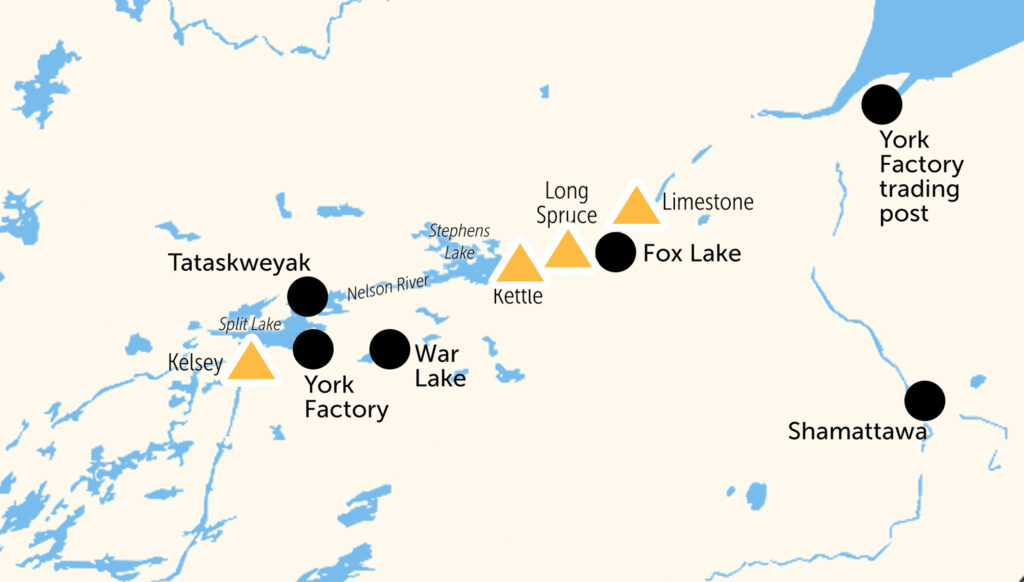
The Kettle dam came online in 1970, tripling the size of what is now called Stephens Lake (named after a Manitoba Hydro chairman) and flooding more than 200 square kilometres of land — including Cree harvesting and cultural sites. Construction quickly began on the next dam, Long Spruce, 16 kilometres downstream. Long Spruce flooded a further 13 square kilometres of Nelson River shoreline. The Limestone dam would soon follow.
At the time, Manitoba Hydro was looking to generate more electricity, both to meet growing demands and to sell power to other jurisdictions. According to a company document, it received permission from the provincial government to re-route “most of the flow” of the Churchill River, which carries five times more water than the Red River, into the Nelson via South Indian and Split Lakes.
The impacts on northern First Nations were, as Beardy says, “devastating.”
Water levels at South Indian Lake, almost 200 kilometres northwest of Tatskweyak, rose an average of three metres. The members of O-Pipon-Na-Piwin Cree Nation, who lived on its shores, were forcibly relocated. The commercial fishery that once thrived on the lake — in its time the third-largest in North America — was destroyed. O-Pipon-Na-Piwin Cree Nation is still impacted by flooding today.
Hydro expropriated more than six square kilometres of Tataskweyak’s reserve land for water storage, and drained more than 415 kilometres of the Churchill river shoreline. The diversion dumped new silt and sediment into Split Lake, muddying the waters, altering fish habitat and increasing the mercury content.
The iconic sturgeon, which can weigh up to 140 kilograms and is critical to several northern fishing economies, began to dwindle. Many First Nations say the sturgeon is now endangered, though it has not been formally recognized as such.
“Our ancestors were always concerned about it … because that was their livelihood,” Spence says of the waterway. “Now it’s always muddy and there’s no peace.”
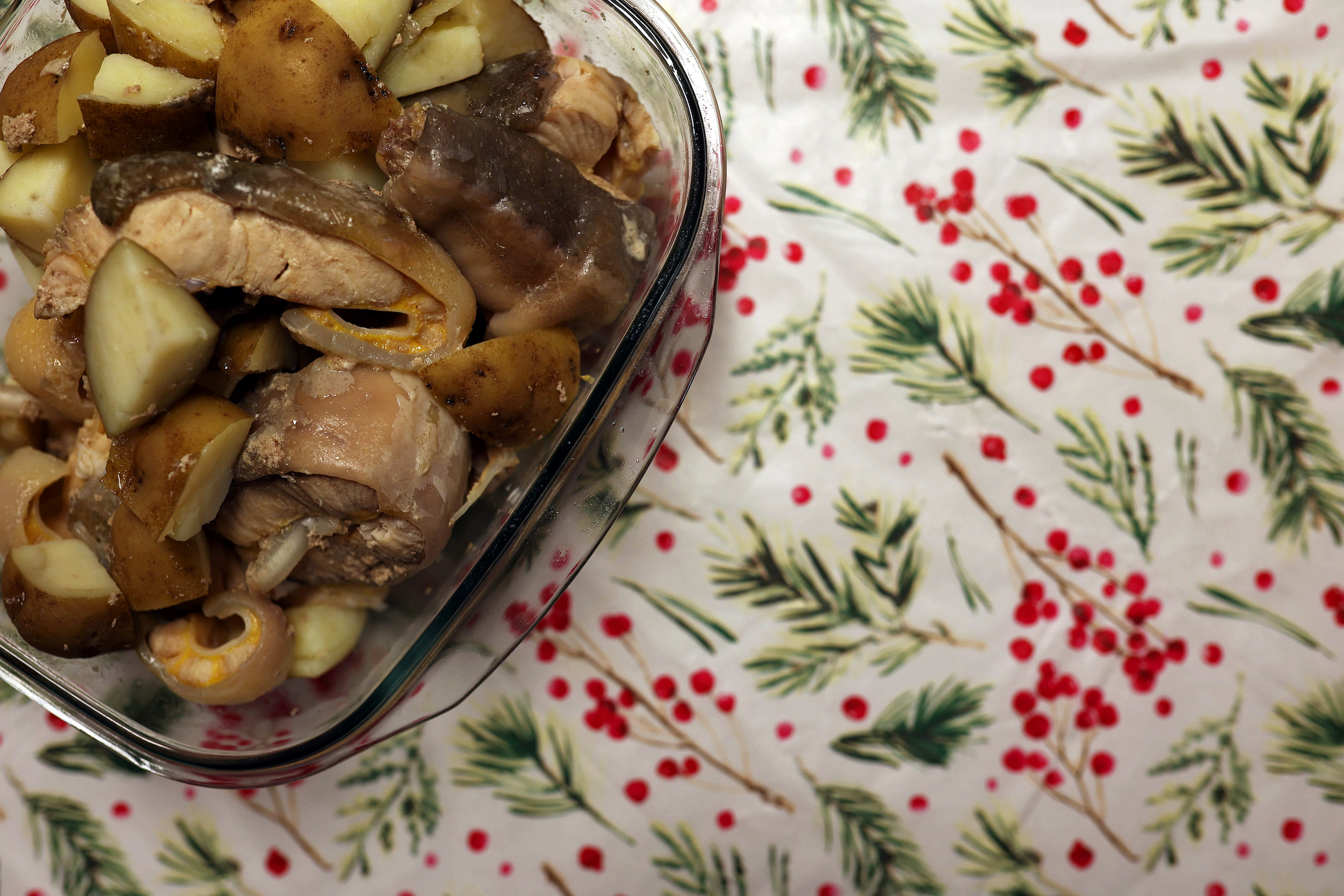

Manitoba Hydro and the provincial government eventually recognized these projects for their devastating effects on what they call the northern flood bands — York Factory, Nelson House, Split Lake, Norway House and Cross Lake.
In the late 1970s, the government began negotiating compensation for the damage wrought by the Churchill river diversion. The eventual deal, called the northern flood agreement, made several land use promises, including four hectares of reserve land for each hectare flooded by the diversion. But the vague language in the agreement left room for debate on how it should be implemented. The communities spent nearly 20 years fighting for compensation and would not reach final settlements until the 1990s and 2000s.
Formally establishing a protected area around their traditional hunting, fishing and gathering places, the nations say, would mean an opportunity to have power over future land use decisions.
“We have had it with people coming into our land and telling us what to do,” Manitoba Keewatinowi Okimakanak Grand Chief Garrison Settee, who is from Cross Lake, says in a barnstorming speech on the first day of the gathering.
“No one will dictate what we do on our territories and our lands. Our children are counting on us, our grandchildren are counting on us. We will not let them down. We will never give up fighting for our land.”
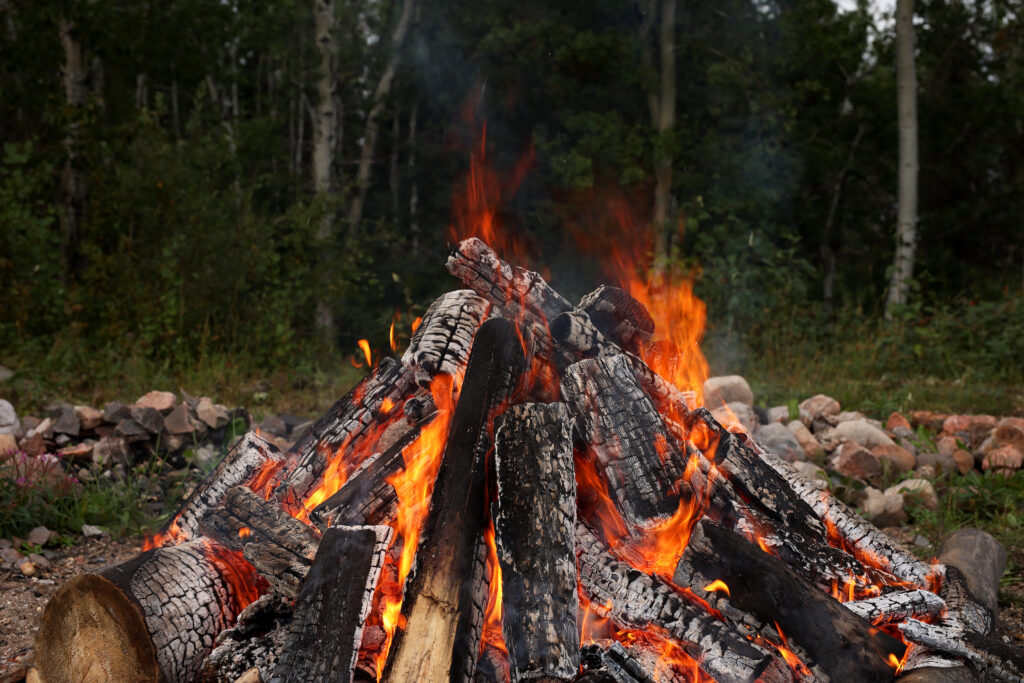
The week’s festivities have been charged with excitement. It’s been warm and sunny after several days of rain; the campground has been alight with shrieks and laughter of children, who spent the first day of the school year taking in lessons from elders and community leaders.
Flora Beardy is taking a moment’s quiet in the glow of a sacred fire lit in the heart of camp.
“It took us over four years to get to where we are today,” the York Factory elder says softly. “Now the hard work begins.”
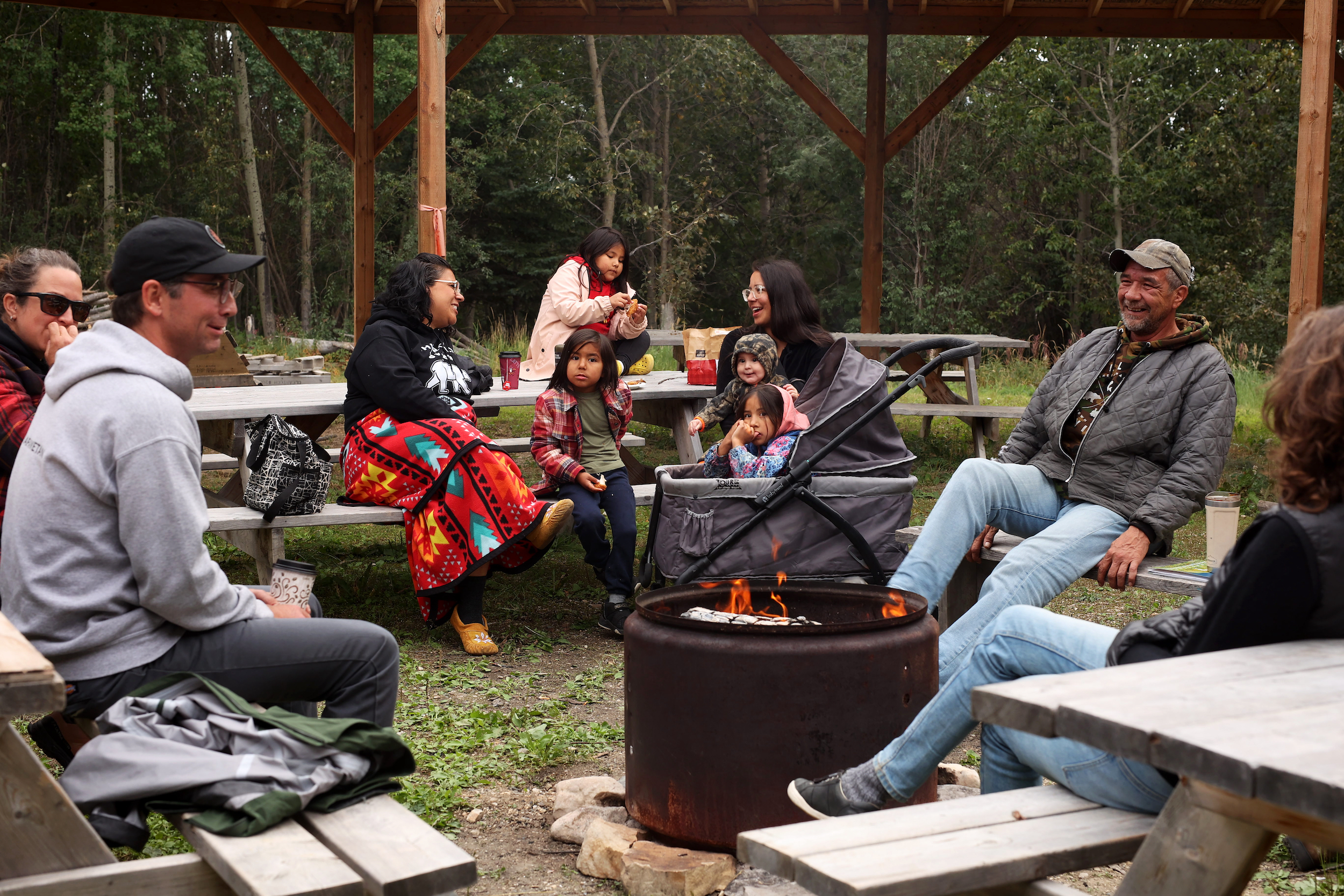
She was first introduced to Kitaskeenan at a community meeting in Thompson, about 250 kilometres west of Fox Lake, in 2019. Soon after, the nascent initiative’s organizing team was looking for members from the five nations to serve as liaisons between the project team and the wider community.
Flora Beardy had just retired from a career in York Factory’s band office, where she ran heritage programming, helped author an oral history of the nation and represented York Factory on land use committees. “So I said: ‘Ooh, right up my alley,’” she chuckles.
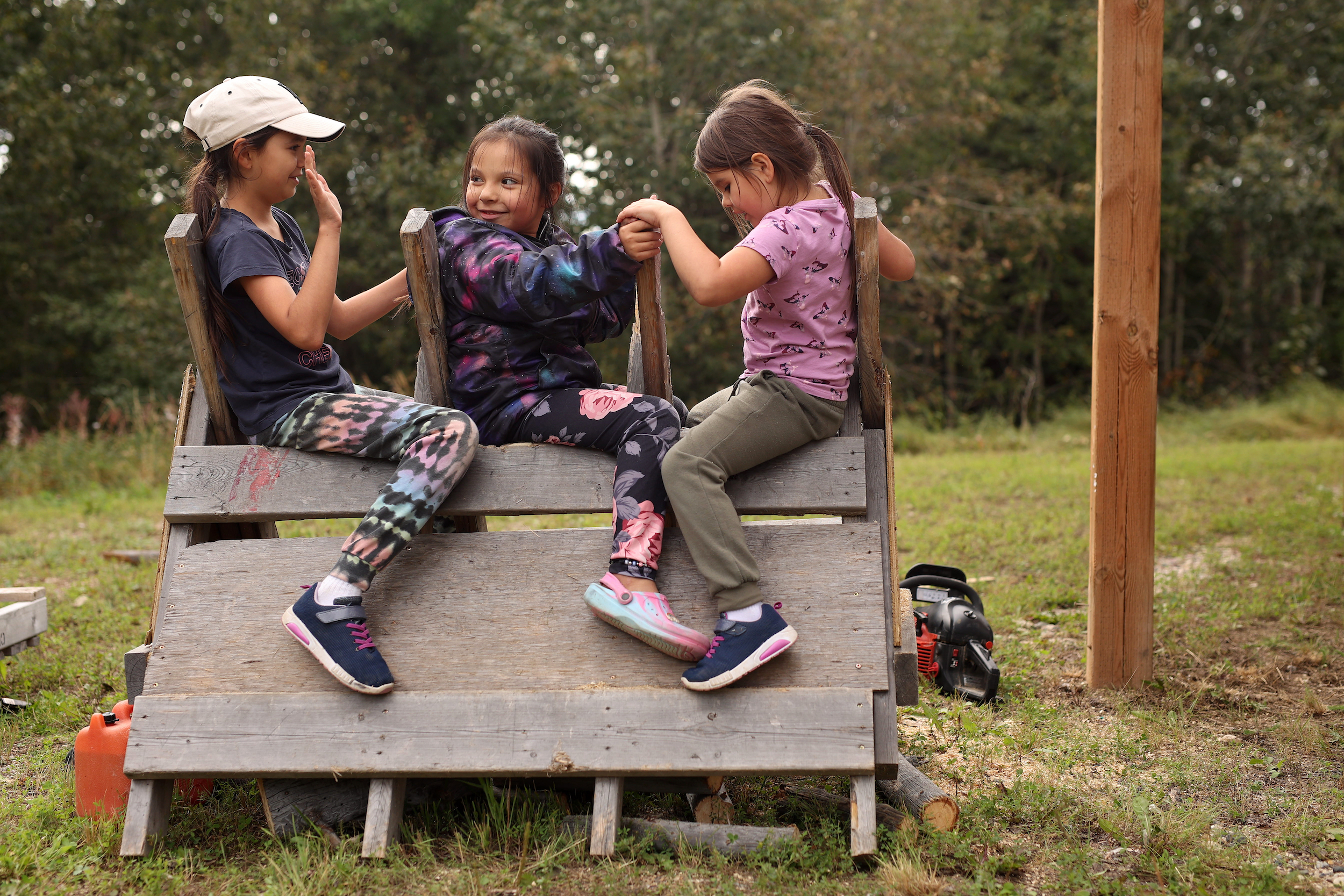
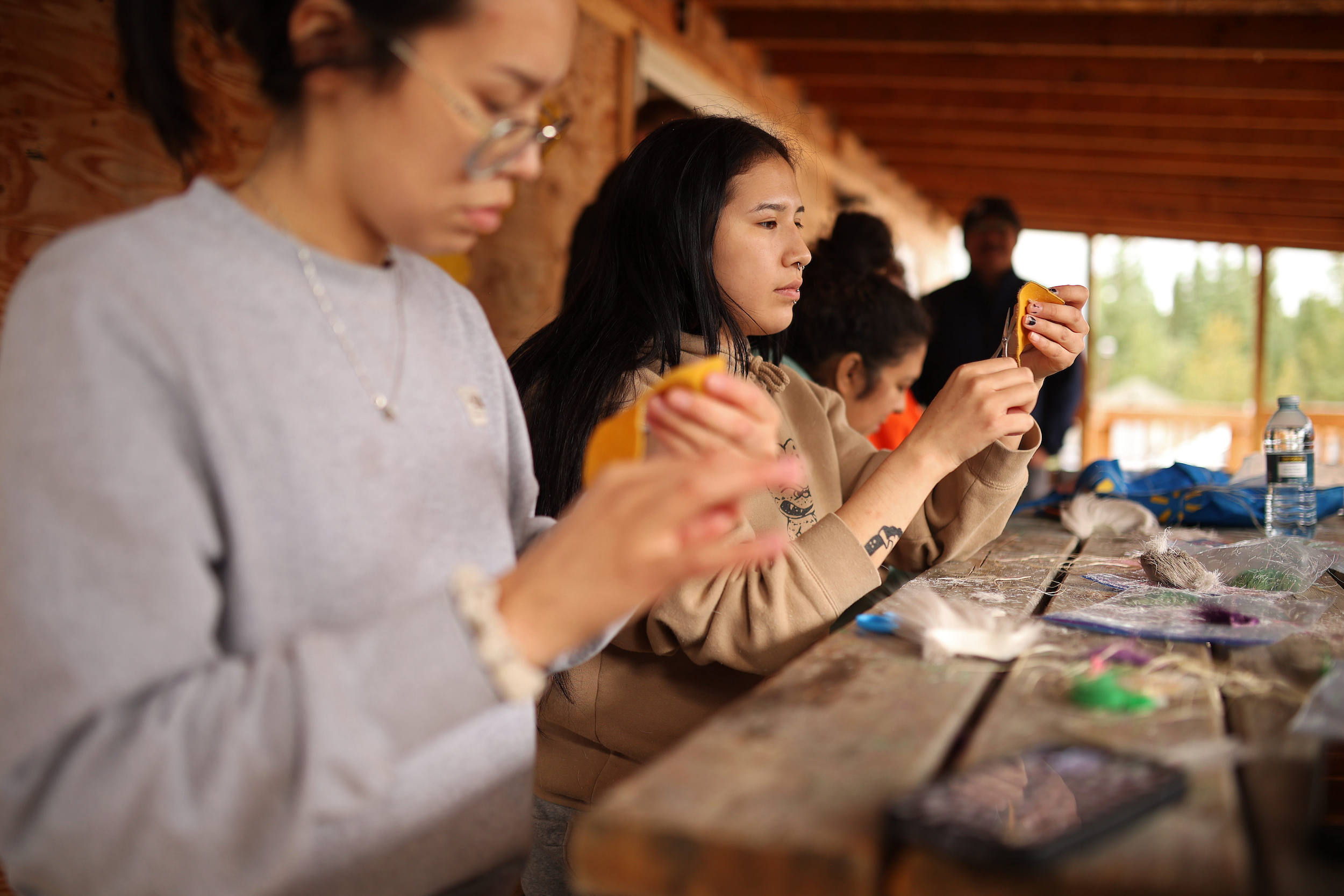
Progress moved slowly by design, she says.
“The most important thing was to be able to trust … and respect each other again as five nations,” Beardy explains. “We were pulled apart so many times by the government with money and projects.”
In between COVID-19 interruptions and restrictions in those first years, co-ordinators hosted community meetings, sat down with elders, visited schools and held meetings with community leaders and regional resource management boards.
“When we first started I could tell there was doubt, but as time went on we started to build up knowledge,” Beardy says. “You don’t just do community visits once, you have to keep going back, make sure they understand the project and feel comfortable with it.”
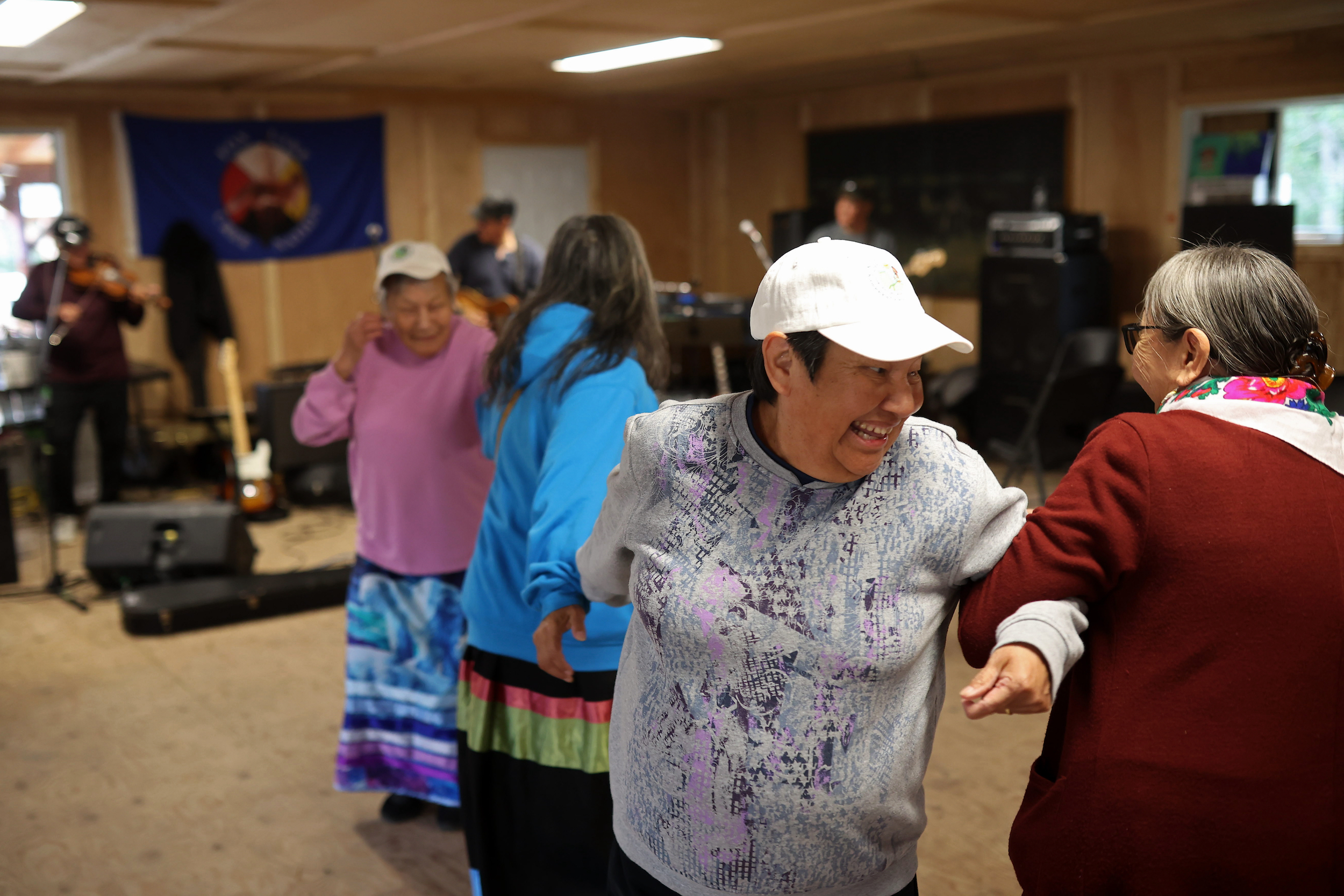
Last fall marked a significant moment as representatives from the Inninew nations came together at Troy Lake, in Tataskweyak, to adopt a vision statement.
“It was the first time ever to have the five nations come together in unity to talk about the land, how we felt about the land and how we wanted to protect the land together to make us stronger,” Lillian Spence, community co-ordinator for War Lake, says.
Spence initially felt reluctant about the protected area project, she shares after a few spirited rounds of bingo on the last night of the gathering. The Keeyask dam, Manitoba’s latest hydroelectric development upstream of Gillam, had already begun construction; Limestone, Long Spruce and Kettle had already left their marks.
“What else are we going to protect?” she remembers thinking at the time.
“As the program progressed I learned more about how we have to protect our lands, we have to talk on behalf of the animals that live there, the plants that grow there, the berries that are there,” she says.
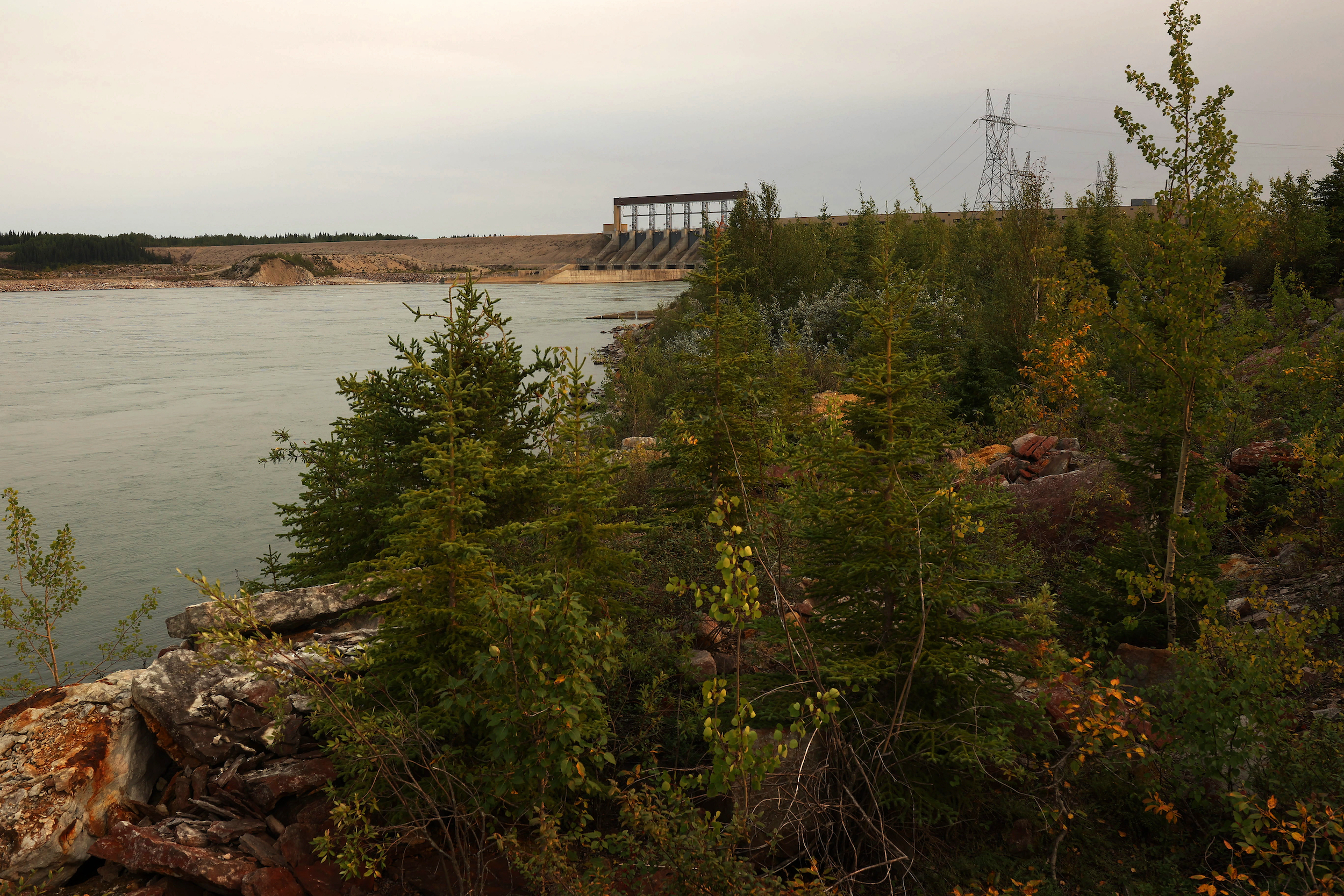
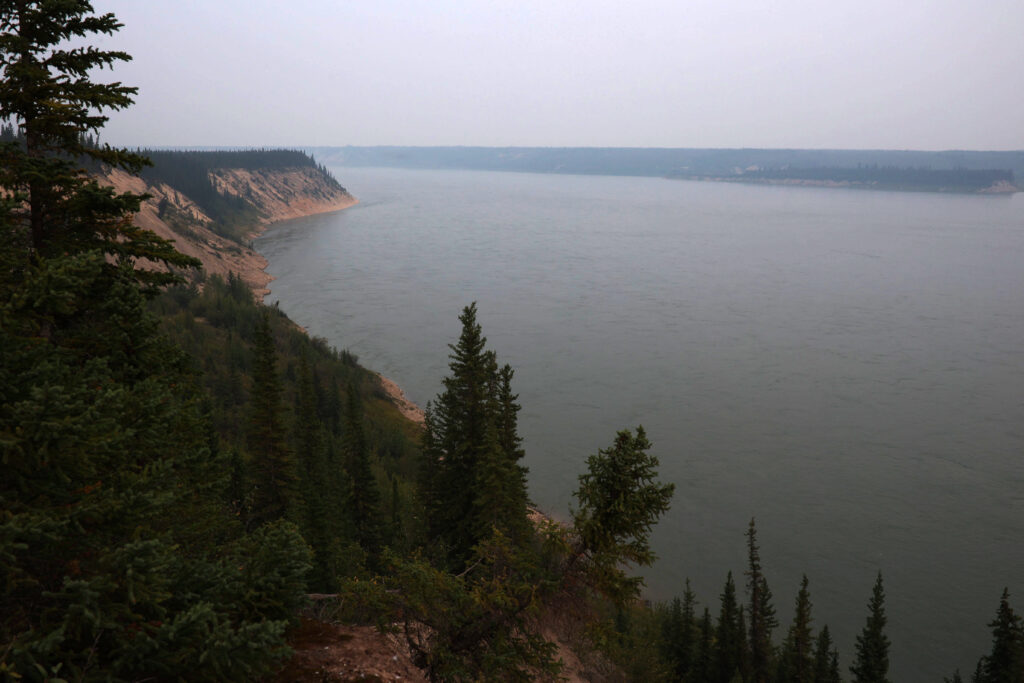
The Cree of the Hudson Bay lowlands historically lived, hunted, trapped and fished “from the Moose River in northeastern Ontario to the Churchill River,” according to an oral history of York Factory that Beardy co-authored. It’s only in the last century they have been split into distinct nations.
“We’ve been here since before history began,” Robben Constant, a project support worker for Kitaskeenan, says. “Our families are from here. Everybody that you see around us, we’ve all been disconnected from our homeland at York Factory.”
Long before the disconnection, 17th century English traders established one of the first Hudson’s Bay Company trading posts at York Factory, near the mouths of the Hayes and Nelson Rivers.
“We helped them gather food, we helped them get furs, [we helped with] trapping. We helped them establish their initial economy,” Constant says.
The Inninewuk formed settlements near York Factory and hunted and trapped for the Hudson’s Bay Company. Successive interventions from the young federal and provincial governments — treaties, trapping restrictions and industrial developments — however, would drive wedges between the nations.
“We were all split up into these different groups because of jobs: some people worked on the railway to Churchill, some people were working at different dams, a lot of them started going to the cities too,” Constant says.
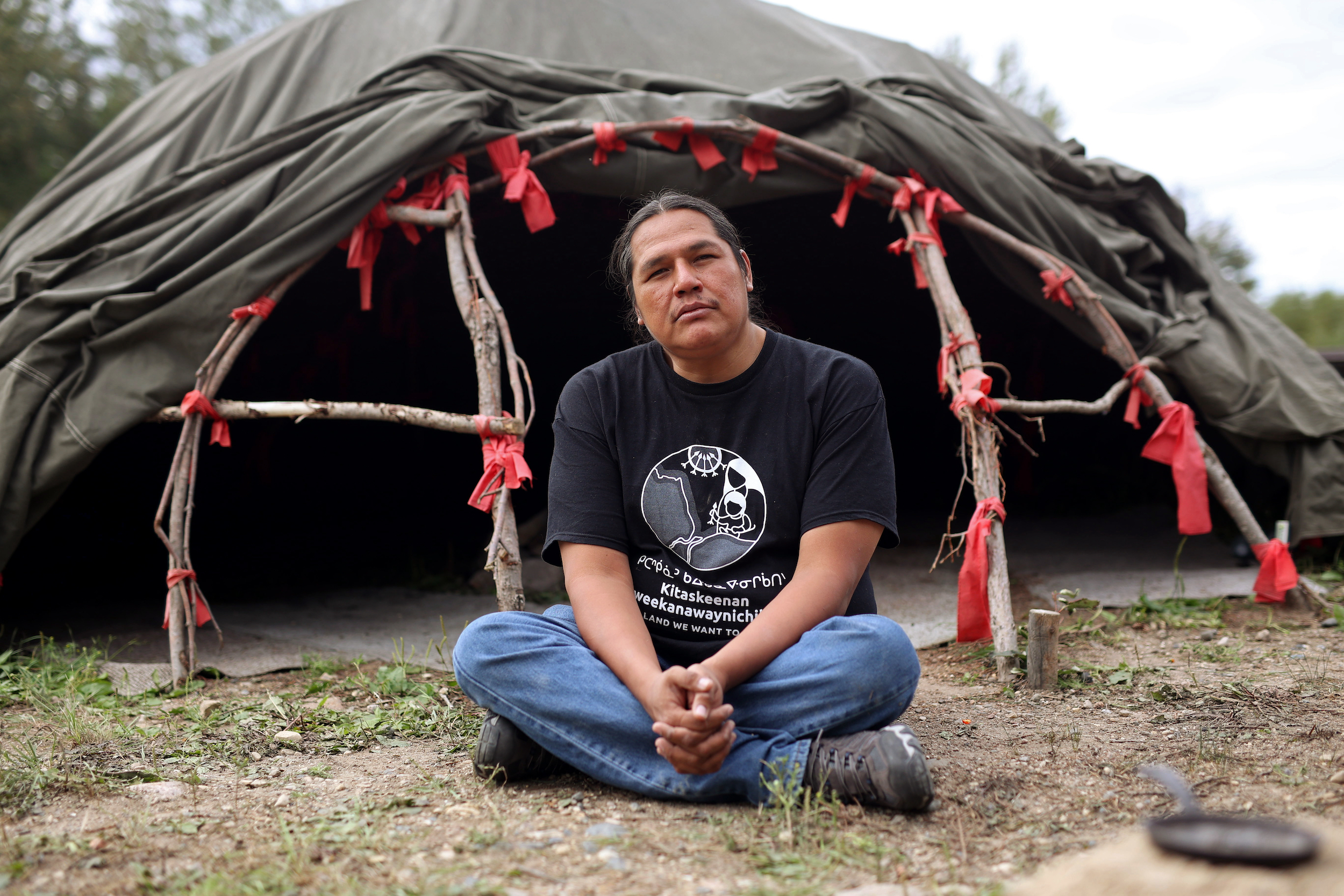
In 1957, the fur trade had become so dismal the Hudson’s Bay Company decided to shutter its long-standing trade post at York Factory and the town store that had been built along with it. For reasons still unclear, the government told the Inninewuk they would need to relocate some 250 kilometres inland to what’s now known as York Landing.
“My great-grandparents were Amelia and Joseph Saunders. What [the government] told them before they left York Factory is that there would be things provided for them in York Landing: a church, a school, housing. All these things were promised to them. So they left York Factory in 1957, they got to the location where the government put them and there was nothing there for them. They just had to start from scratch. They couldn’t go back for their stuff — they had their babies with them, other families depending on them,” Constant says.
“When she first came to York Landing [my great-grandmother] wept. She cried because nothing was familiar. The water was different, the land was different, the food was different. This is the injustice of being relocated from our homelands.”
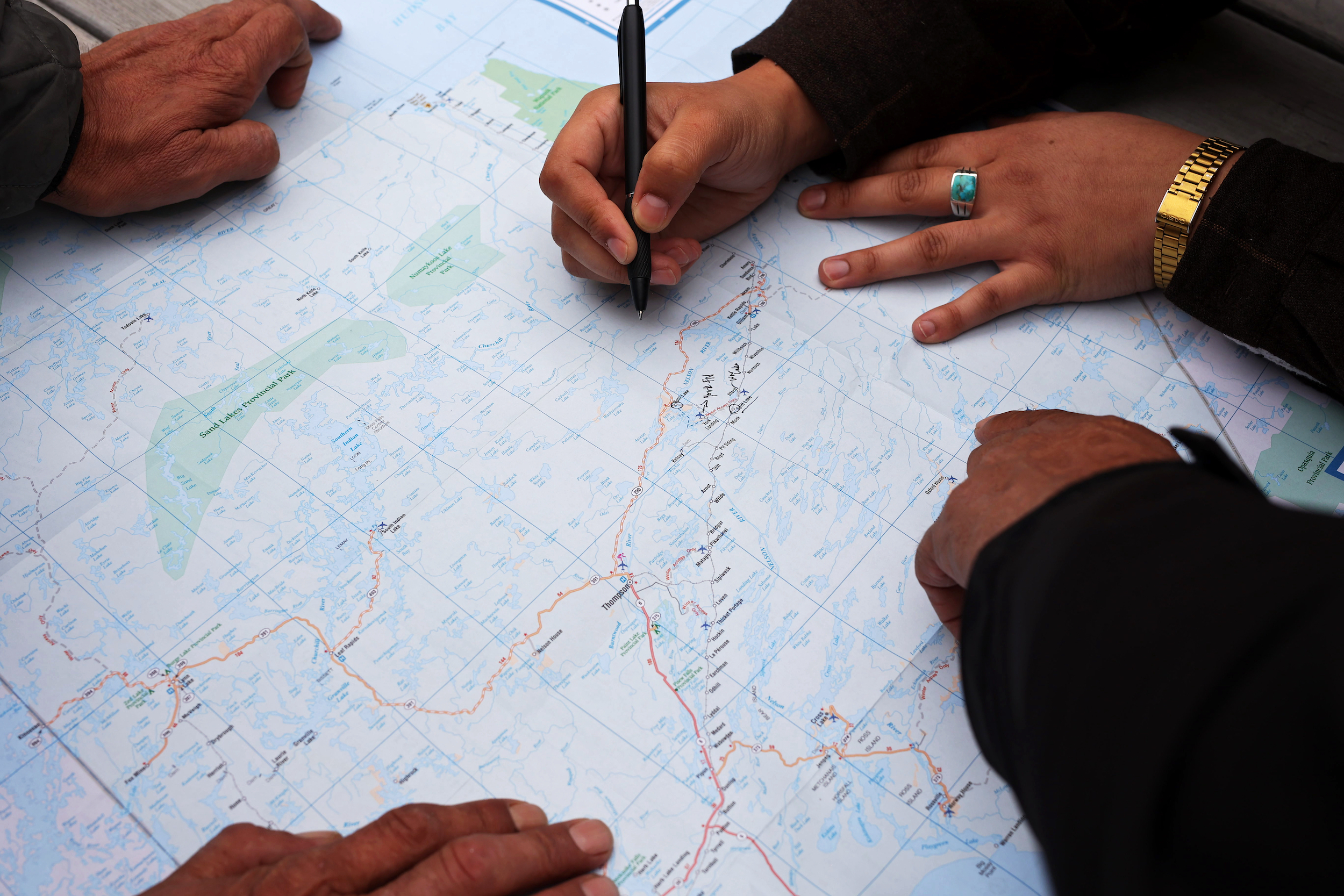
York Factory First Nation was not able to secure trapping rights because the lands had already been allocated to other First Nations. They attempted to return to York Factory to hunt and fish but the province had taken the land over as the Churchill and Kaskatamagan wildlife management areas. To this day, York Factory members still share a single registered trapline.
“We are a people without land and without resources,” former Chief Thomas Beardy wrote in a 1978 letter to Manitoba’s premier.
Kitaskeenan is the first initiative since the relocation to bring all five communities together in pursuit of the same goal: not only to have a powerful voice in what happens to the land, but to make those decisions together.
“For me, this project represents our reconnection back to that land and our reconnection back to each other,” Constant says. “Re-learning who your family is, who your people are, who you belong to.”
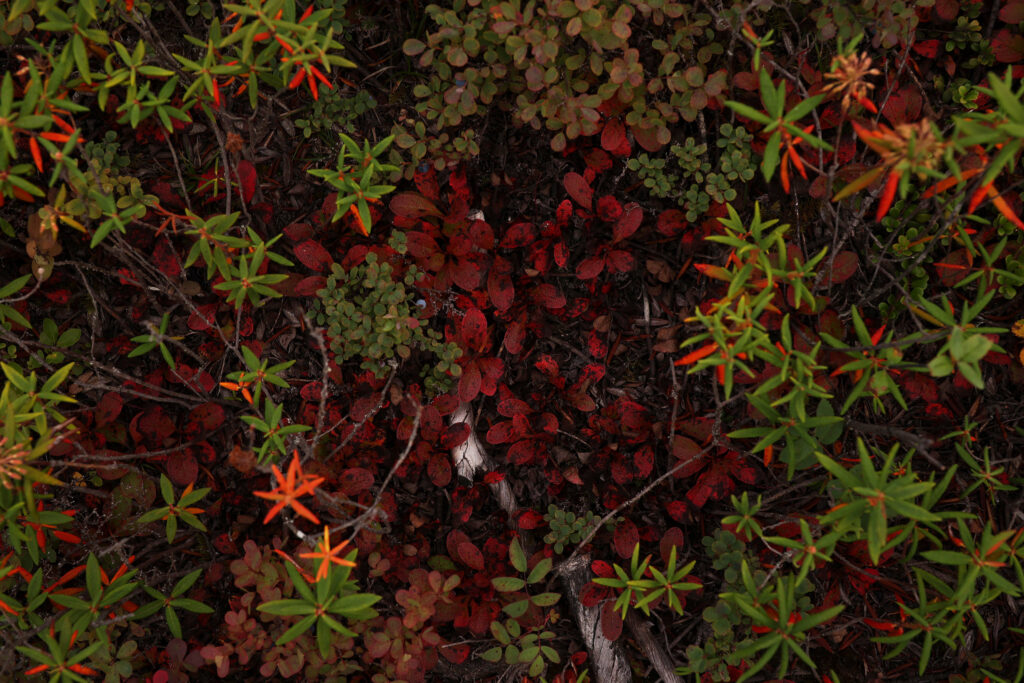
Under a brisk, overcast chill heralding the coming of a northern fall, Dylan Bignell leads a small group of the week’s guests through the brush on the outskirts of camp.
“This one here is fireweed,” he calls out, motioning to a stalk of wispy pink tendrils at the edge of the woods.
“When it blooms, it starts at the bottom … and works its way up. This is a good indicator of how much time you have left in the summer, how much time you have left to pick your medicine. By the time the fireweed is done growing, as you see here, the season is already beginning to change.”
He stoops to pull stems of yarrow, aster and clover. He pauses at a tangle of wild roses, explaining how the red-orange rose hips can be dried and ground into a powder chock-full of vitamin C.
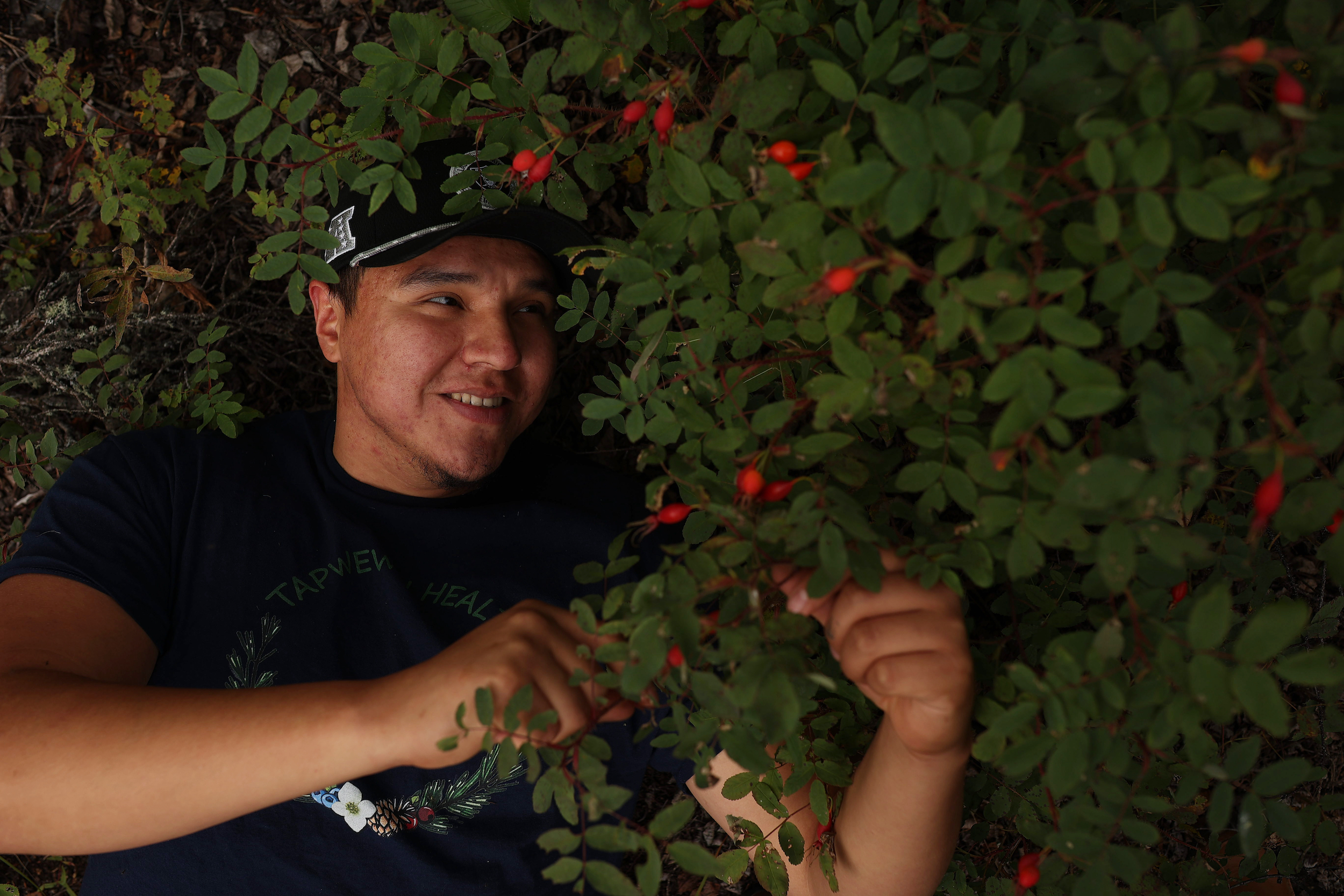
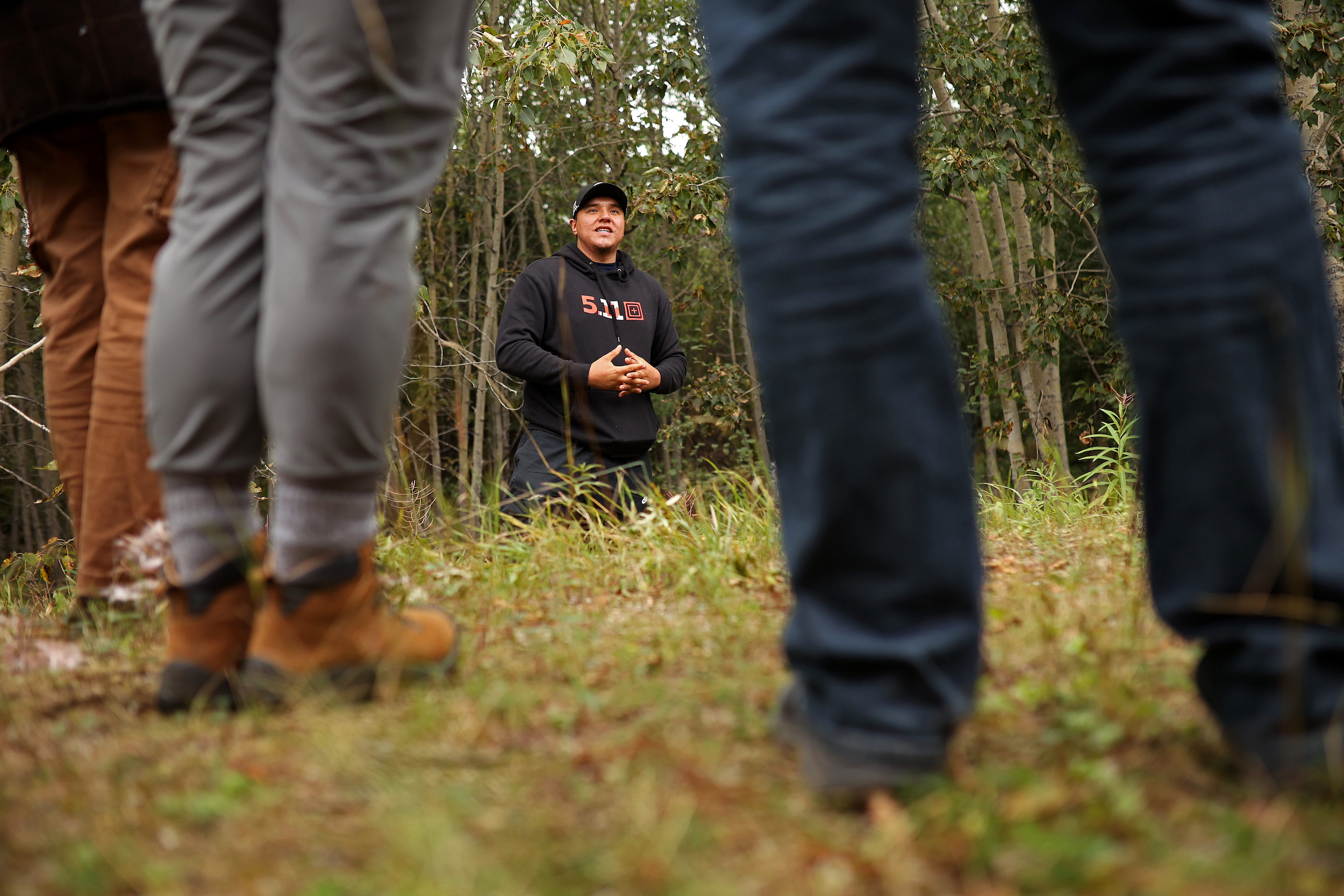
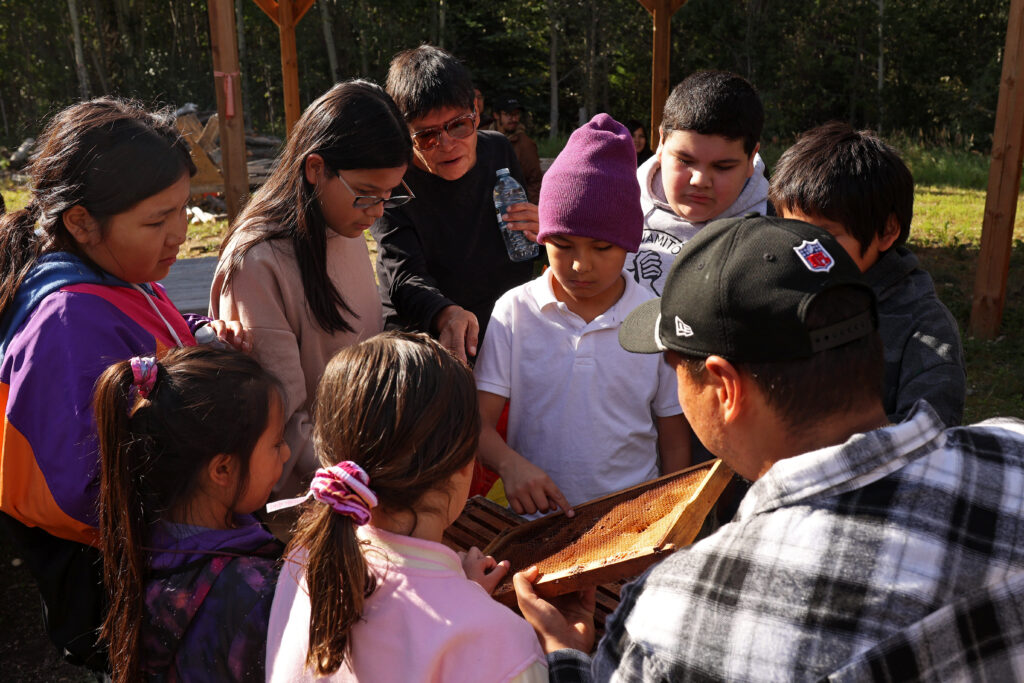
Bignell was born and raised in Thompson, though his family is from Cross Lake, near the mouth of the Nelson. He struggled with his mental health growing up, weighed down by intergenerational trauma, he says. In a season of isolation, Bignell turned to the land, remembering the stories he had been taught about traditional medicines.
“This is what changed my life,” he says, looking out over a clearing above the banks of the Nelson. “This was a positive, constructive avenue that was available to me, and it’s available to all of our people — not just First Nations people, but everybody.”
Bignell is passionate about passing these teachings on to the next generation. He started non-profit Tapwewin Health as a path toward mental and physical wellness centred on land-based education. Through Tapwewin, he runs a berry farm, keeps bees, makes jam and leads workshops and plant walks to help youth reconnect with the land. Protected area initiatives like Kitaskeenan, he says, are critical to making sure this healing path is available long into the future.
“With the mines around my town, you can’t pick any of the medicine,” he says, referring to the nickel and other base metal mines in the Thompson region. “We don’t want that to spread to the point that we can’t even live off our land, we can’t hunt, we can’t fish, we can’t forage — and that’s very possible. Our land is very vulnerable and it needs us to protect it.”
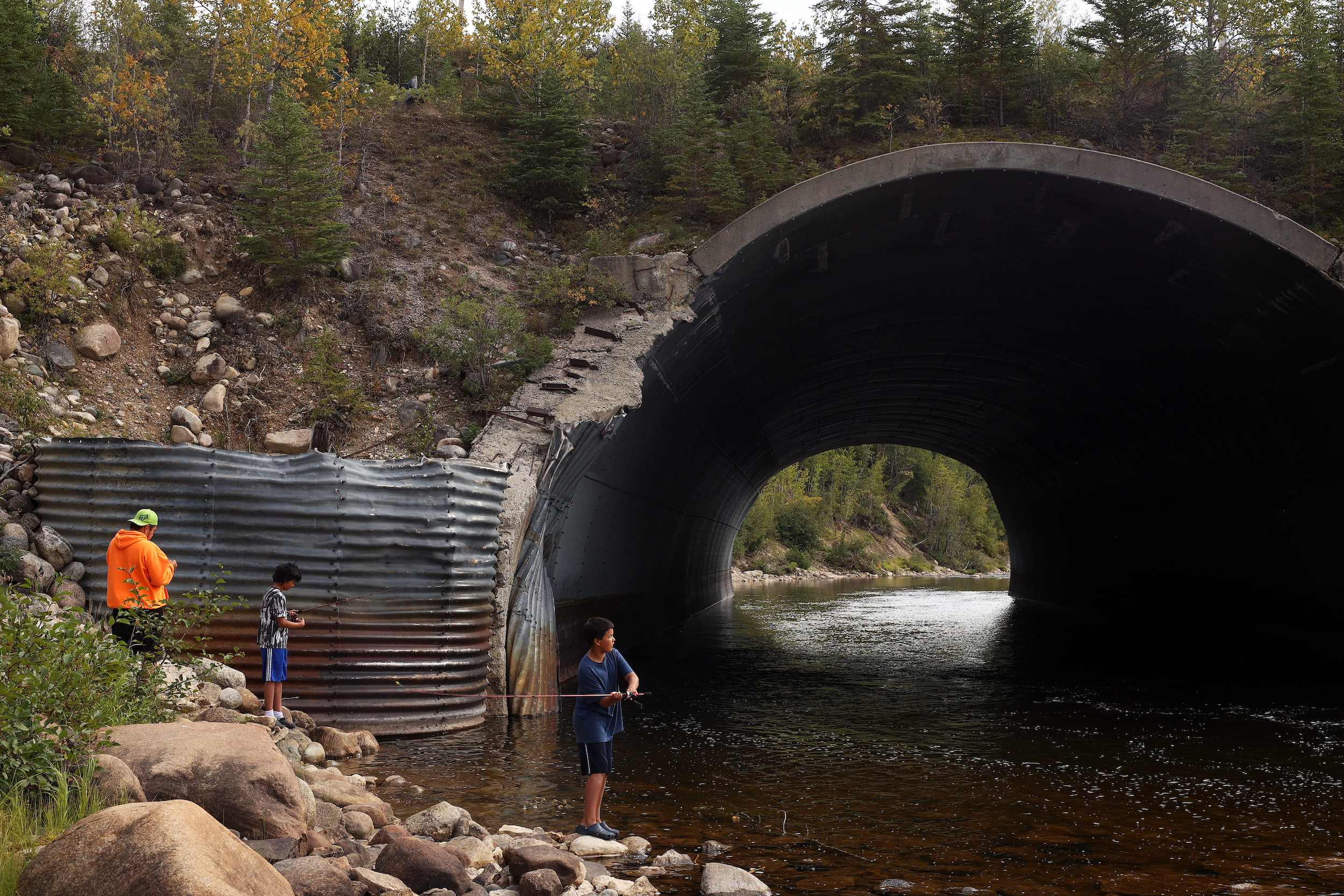
The relocation of York Factory, the destruction of the Nelson River and the loss of fisheries and traplines have left painful scars on the Inninew nations. The nations face housing shortages and insufficient infrastructure; several communities do not have access to an all-season road and fluctuating water levels can make the ice roads unpredictable and perilous for communities around Split Lake.
Manitoba Keewatinowi Okimakanak has spoken out about the youth suicide crisis in several northern First Nations. Tataskweyak (Split Lake) and Shamattawa have been without access to clean drinking water for years. (Federal lawyers recently responded to a class action lawsuit launched by Shamattawa’s leadership by claiming the government has no legal obligation to ensure clean water on First Nations.)
But members of the five nations agree: time on the land is a balm for many ailments.
“The land is truly a healer and a lot of our people need healing,” Flora Beardy says. “We need to keep those land-based programs going because I know they work.”
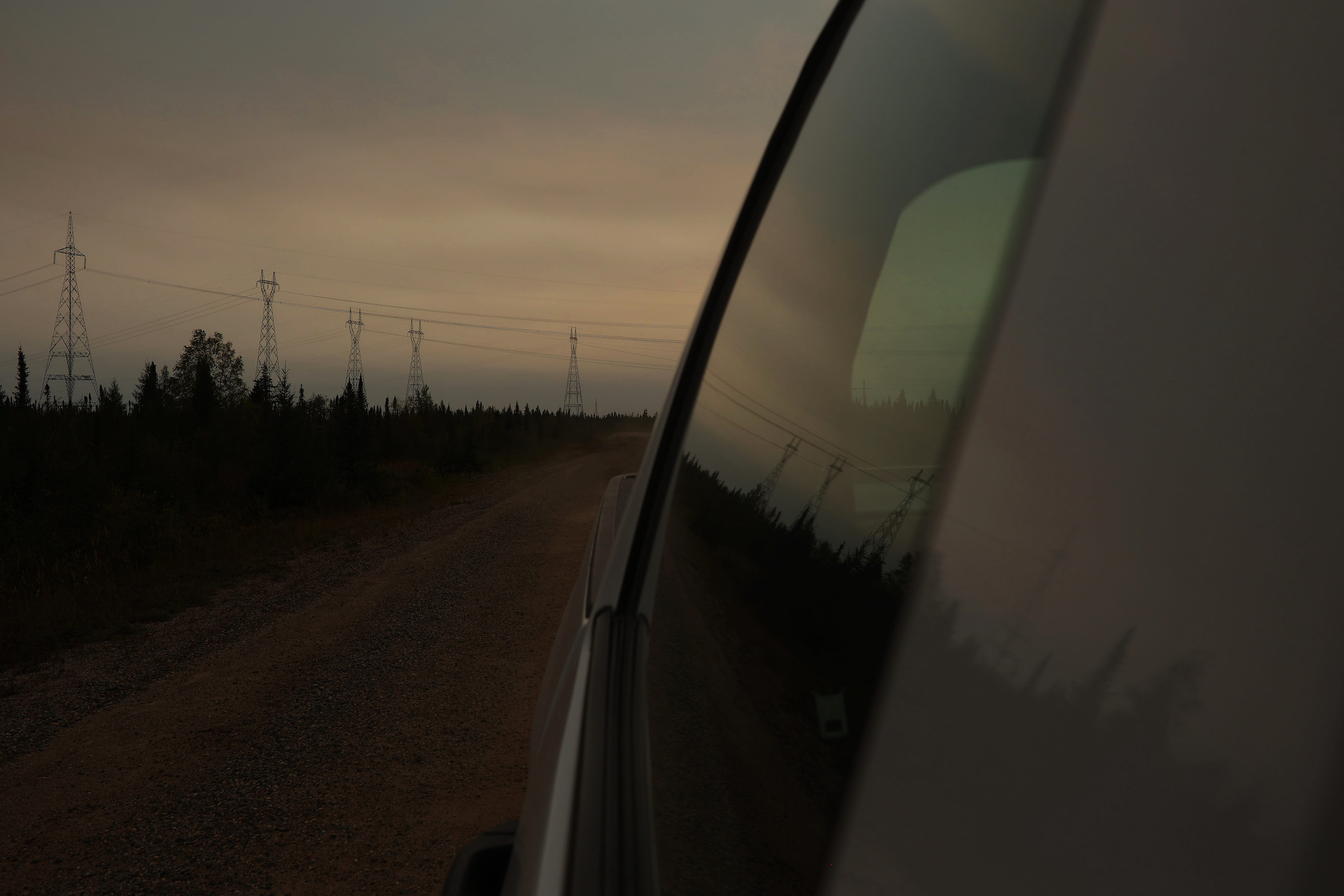
Though it’s yet to be finalized, land-based education will be at the heart of Kitaskeenan. Robben Constant would like to see the handful of existing cabins at York Factory transformed into a multiplex where families can seek healing resources, hunt, trap, fish, learn about traditional medicines, the river systems and the history of the lands.
“The overall goal of the project in my mind is re-establishing a presence in York Factory,” he says. “We want to go back now. We want to reclaim what we lost.”
There are some, like Beardy, who want to see the whole of the nation’s traditional territory protected from any kind of industrial development, while others believe some development is inevitable.
“I know we’re not going to be able to stop development … but I’d like for us to be part of the planning process and have a voice to be heard, not just pushed aside,” Jimmy Lockhart says.
Companies and governments have pitched plans for pipelines, ports, mines and power infrastructure that would cross into the Inninewuk territories. Delivering official remarks on behalf of the province, Eric Redhead — a former Chief of Shamattawa, now MLA for Thompson — notes Manitoba is “working towards removing barriers to ensure that Indigenous people are recentered to a position of strength in the economy” and highlights the potential for eco-tourism.
Whatever comes next for the region, all five communities are united: it should — and will — be up to the Inninewuk to decide.
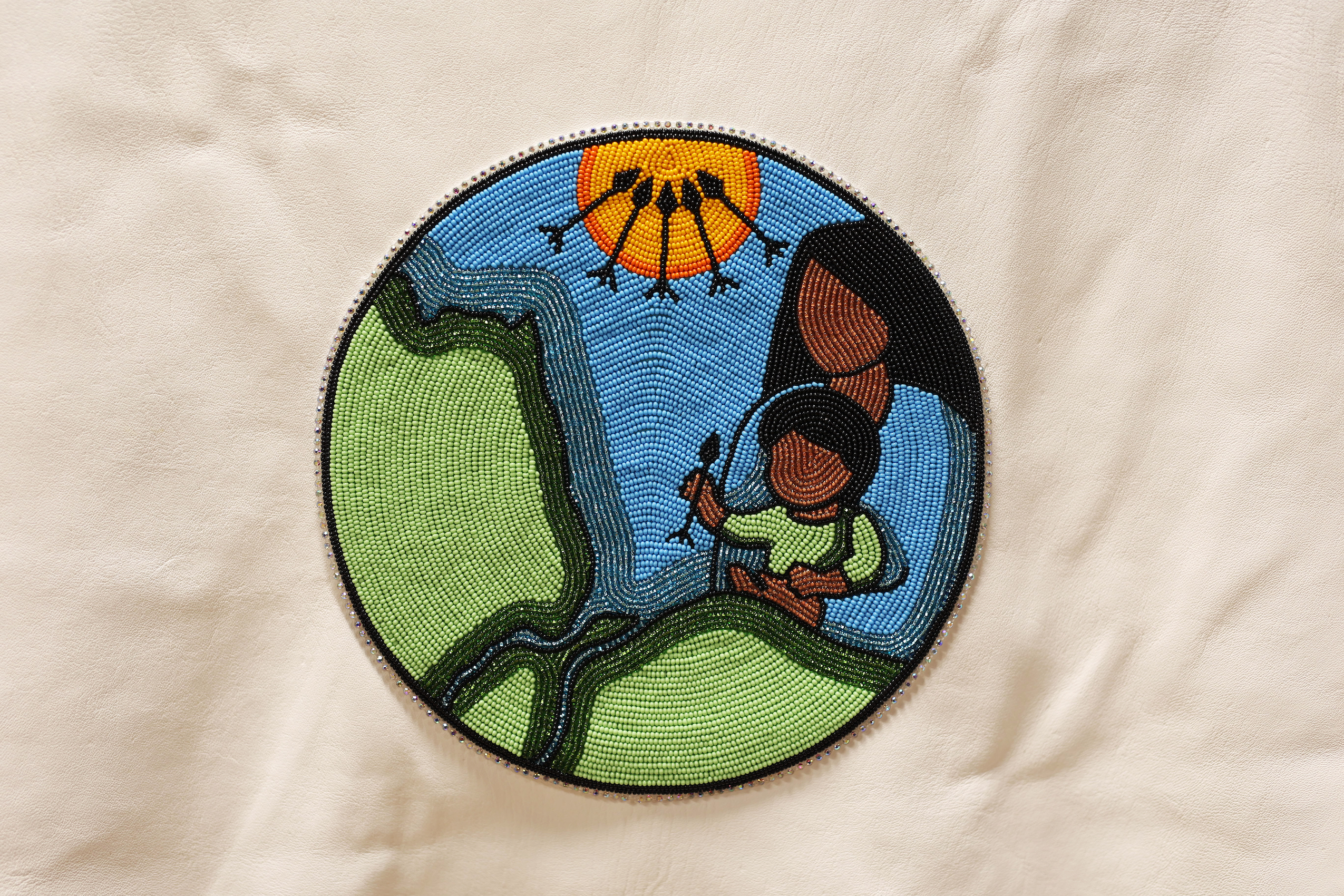
Fox Lake’s leader, Beardy, points to the symbol that has guided Kitaskeenan through its development: a bundle of five arrows the communities have brought to their gatherings since the vision statement was signed last year.
“One arrow you can bend it, you can break it. If you put two arrows together it gets stronger. When you put all five arrows together, just like the five nations that are doing this, you can’t break it,” he says. “It is strong.”
Julia-Simone Rutgers is a reporter covering environmental issues in Manitoba. Her position is part of a partnership between The Narwhal and the Winnipeg Free Press.
